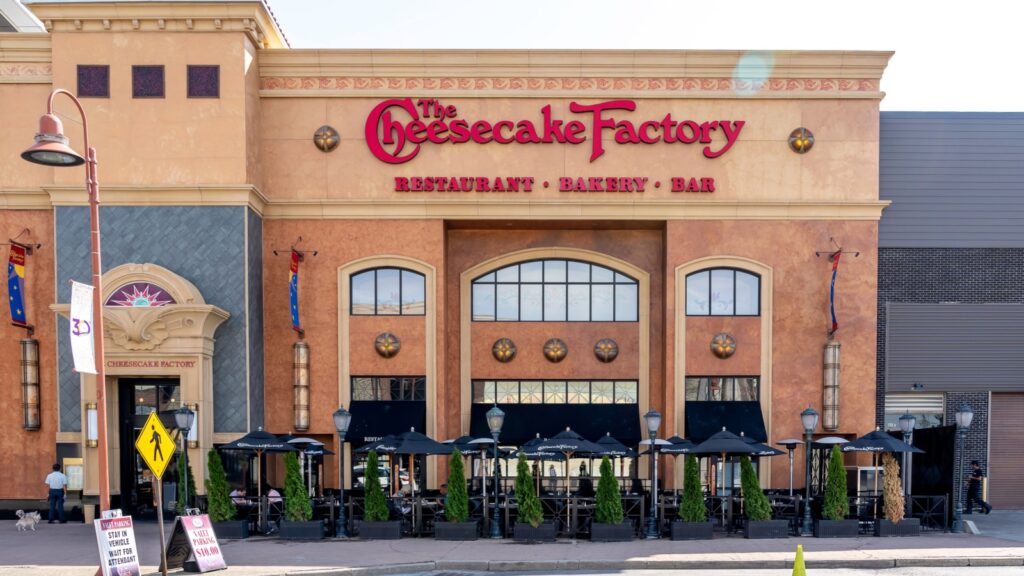Some American chains arrive in Canada with fireworks, big promises, and bigger logos, only to spark endless debates at dinner tables. Canadians love convenience, comfort, and coffee as much as anyone else, but that doesn’t mean every U.S. import gets a warm welcome. From aggressive marketing to baffling prices and confusing cultural mismatches, several American brands have found themselves both adored and criticized north of the border. Here are 20 American chains that Canadians secretly love to hate.
Chipotle
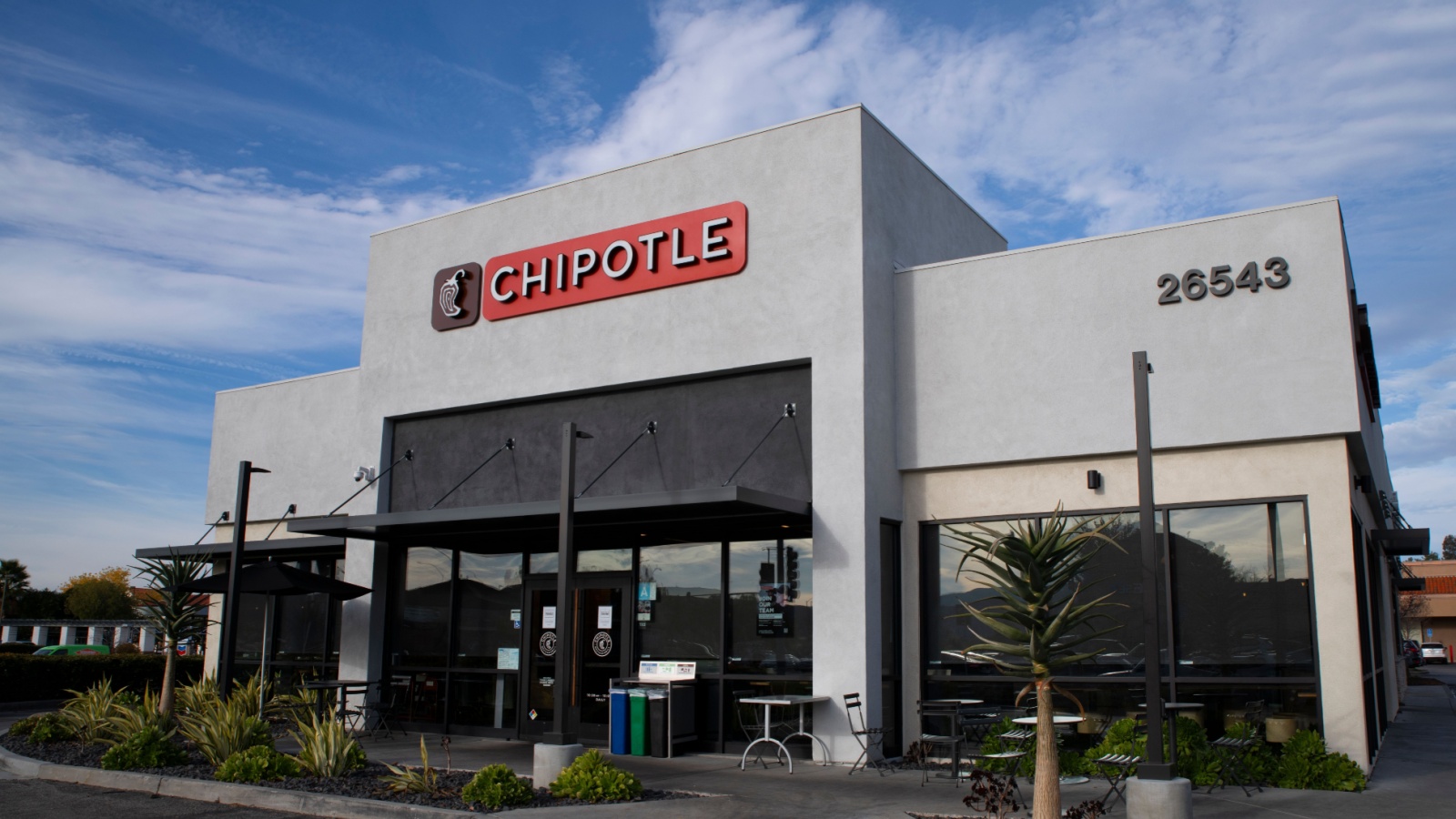
Chipotle entered Canada promising fresh, customizable Mexican food, something that sounded great until people saw the prices. Canadians quickly noticed they were paying nearly $18 for a burrito and guac that costs extra. While the food quality is praised, the portions and value often aren’t. Complaints about line congestion and inconsistent spice levels abound, but it remains a lunchtime favourite for downtown workers. There’s also mild resentment toward its “healthier fast food” branding, which feels ironic once you realize how calorie-dense those burritos are. Still, no one’s quitting that smoky chipotle mayo anytime soon.
Target
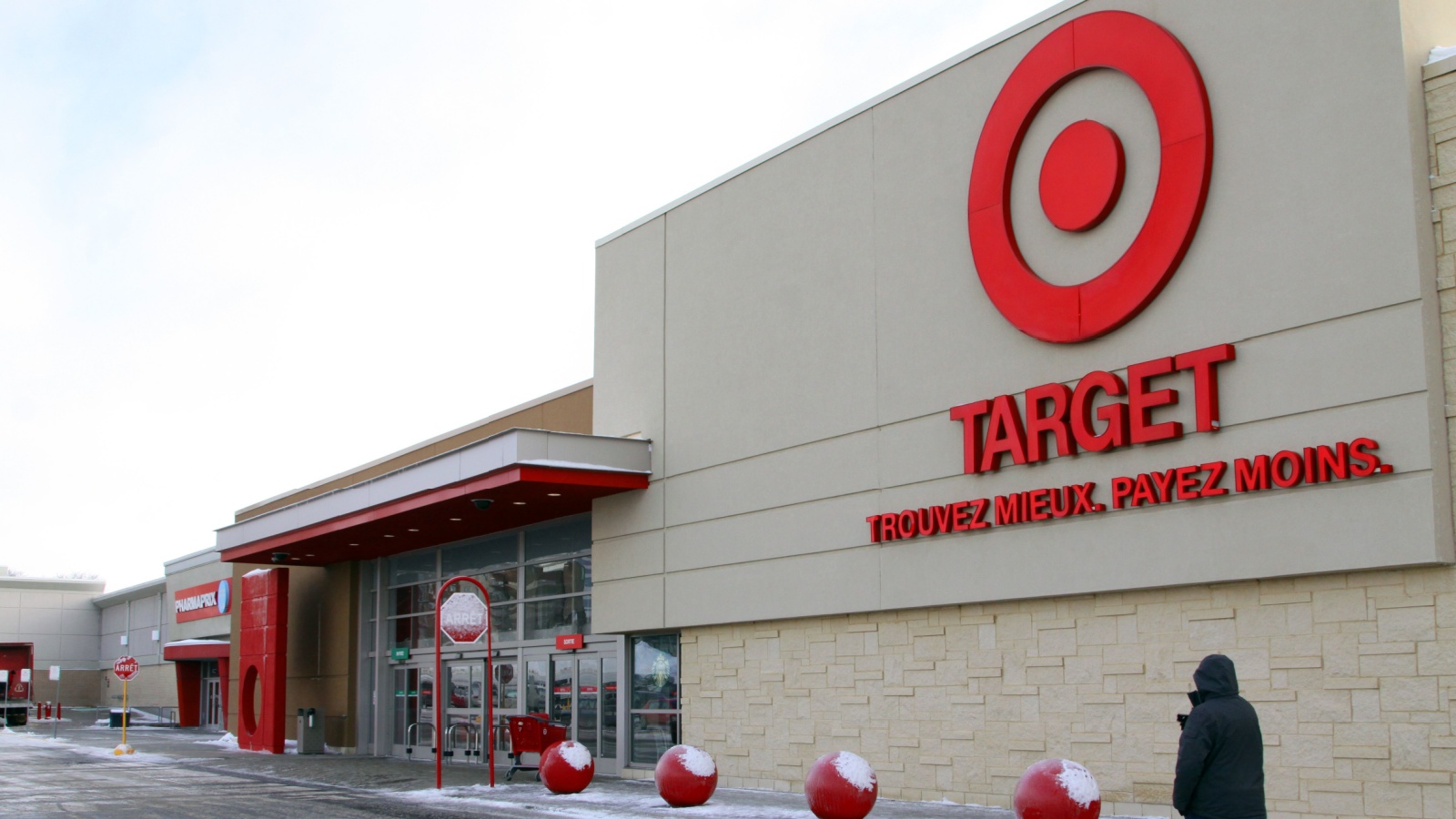
Target’s short-lived Canadian venture is still legendary, for all the wrong reasons. When it opened in 2013, excitement was sky-high. Then came the empty shelves, higher-than-expected prices, and lack of U.S. product selection. Within two years, every store shut down. Canadians mock the brand for its overconfidence but still admit to missing its aesthetic and product variety. Ironically, many still cross the border just to shop at Target, proving that the love-hate dynamic lives on. It’s remembered as the ultimate corporate heartbreak story, where anticipation turned into disappointment faster than any clearance sale.
Taco Bell
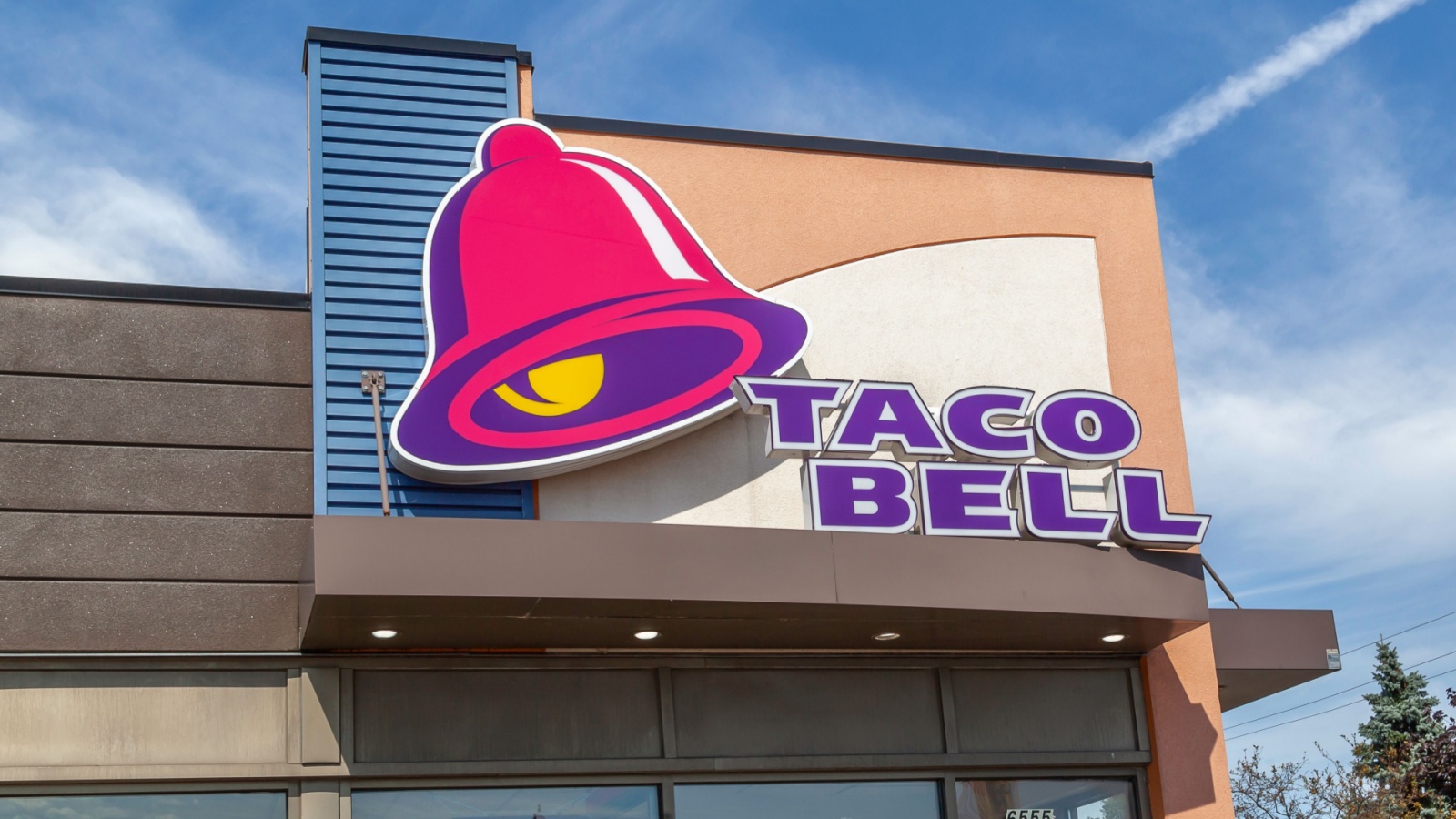
Taco Bell’s reputation in Canada is as messy as its tacos. Fans defend its late-night appeal, while critics dismiss it as low-quality fast food pretending to be Mexican cuisine. Many complain about bland meat or ingredients that feel processed beyond recognition. Yet somehow, those cheesy Gordita crunches keep selling. The brand thrives on nostalgia and affordability, even if most customers wouldn’t admit it in public. Whether it’s a guilty pleasure after a night out or a spontaneous craving, Taco Bell remains both mocked and loved in equal measure, proof that taste buds don’t always care about dignity.
Applebee’s
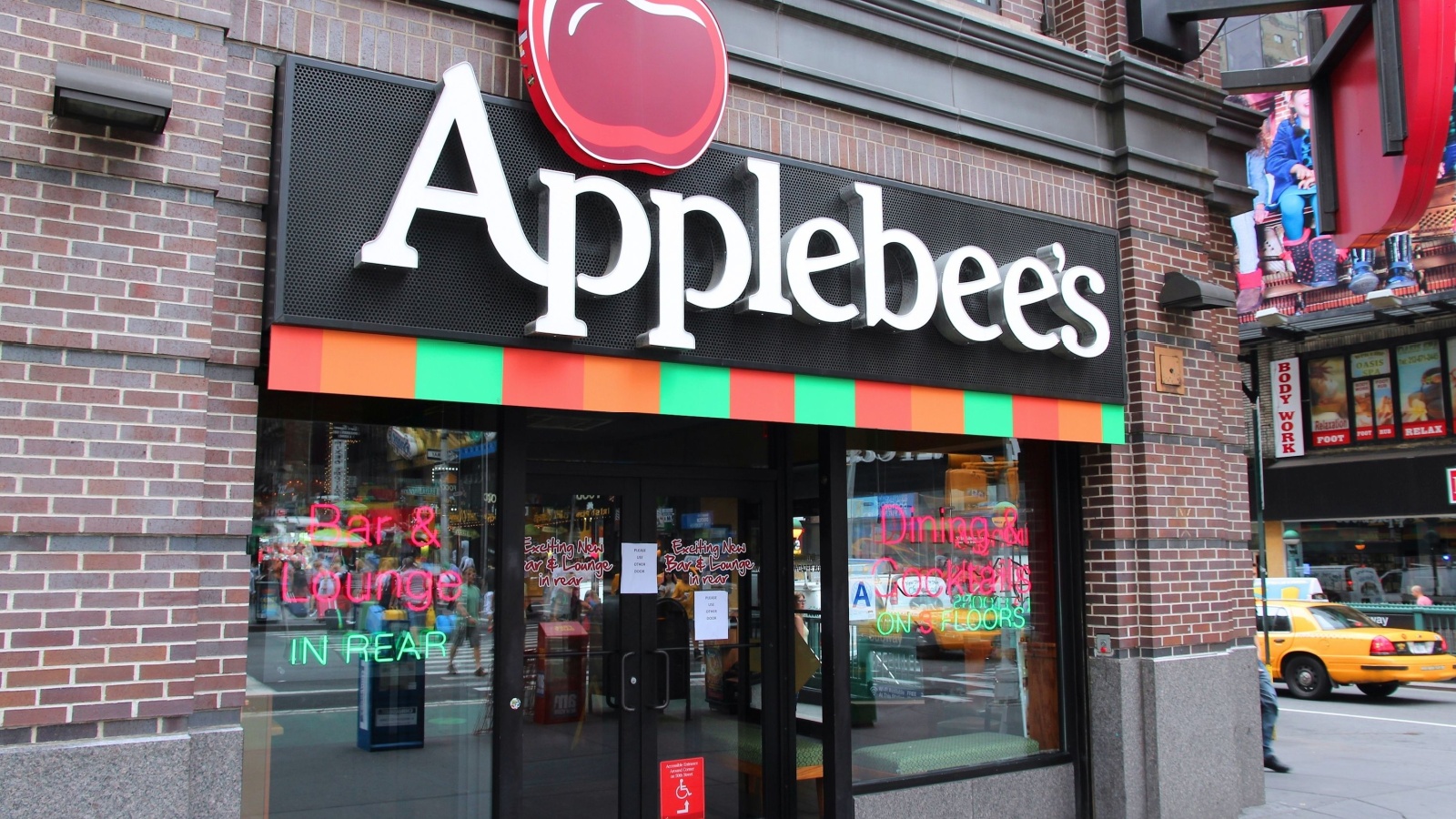
Applebee’s markets itself as the “neighborhood grill,” but many Canadians think of it as the place for average food at premium prices. Its menus are massive, its cocktails sugary, and its décor eternally stuck in 2005. Critics often say it lacks personality, yet it somehow continues to draw in families who want predictable, safe dining. It’s comfort food for the indecisive: a little bit of everything, nothing truly special. Still, its boneless wings and happy hour deals maintain loyal followers. Applebee’s may never win awards, but it wins enough stomachs to stay relevant.
Subway
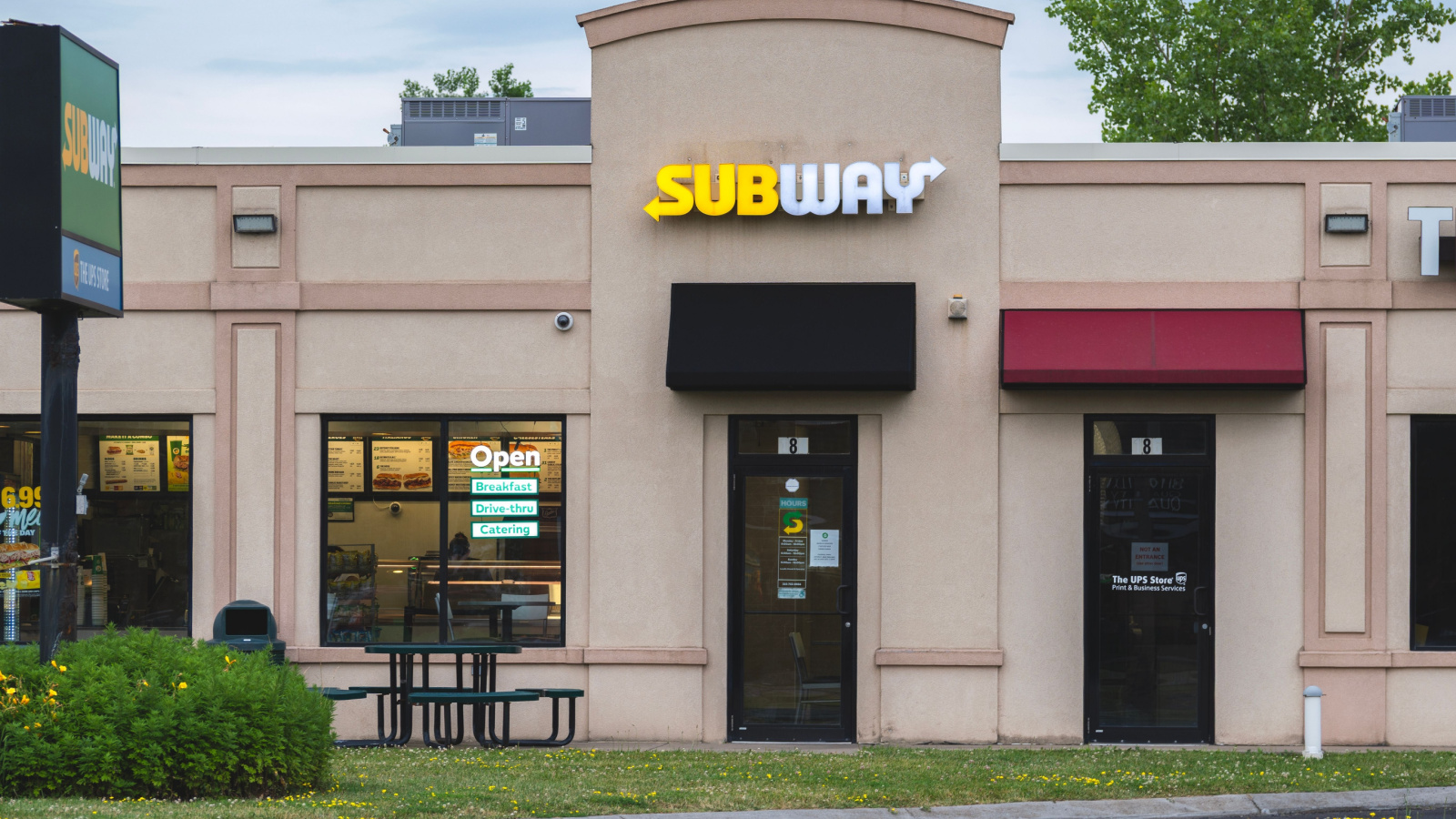
Subway markets itself as the “healthier” fast-food option, but Canadians have long stopped buying that idea. Between limp lettuce, inconsistent portioning, and bread that barely resembles actual bread, Subway earns more eye rolls than praise. Yet, during a workday lunch rush, its convenience wins every time. People love to complain about soggy sandwiches, but that footlong remains a dependable go-to. There’s something almost ritualistic about pretending to choose “fresh” ingredients while watching your meal wrapped in paper. Subway isn’t anyone’s favourite, but it’s the fallback choice that nobody truly quits.
IHOP
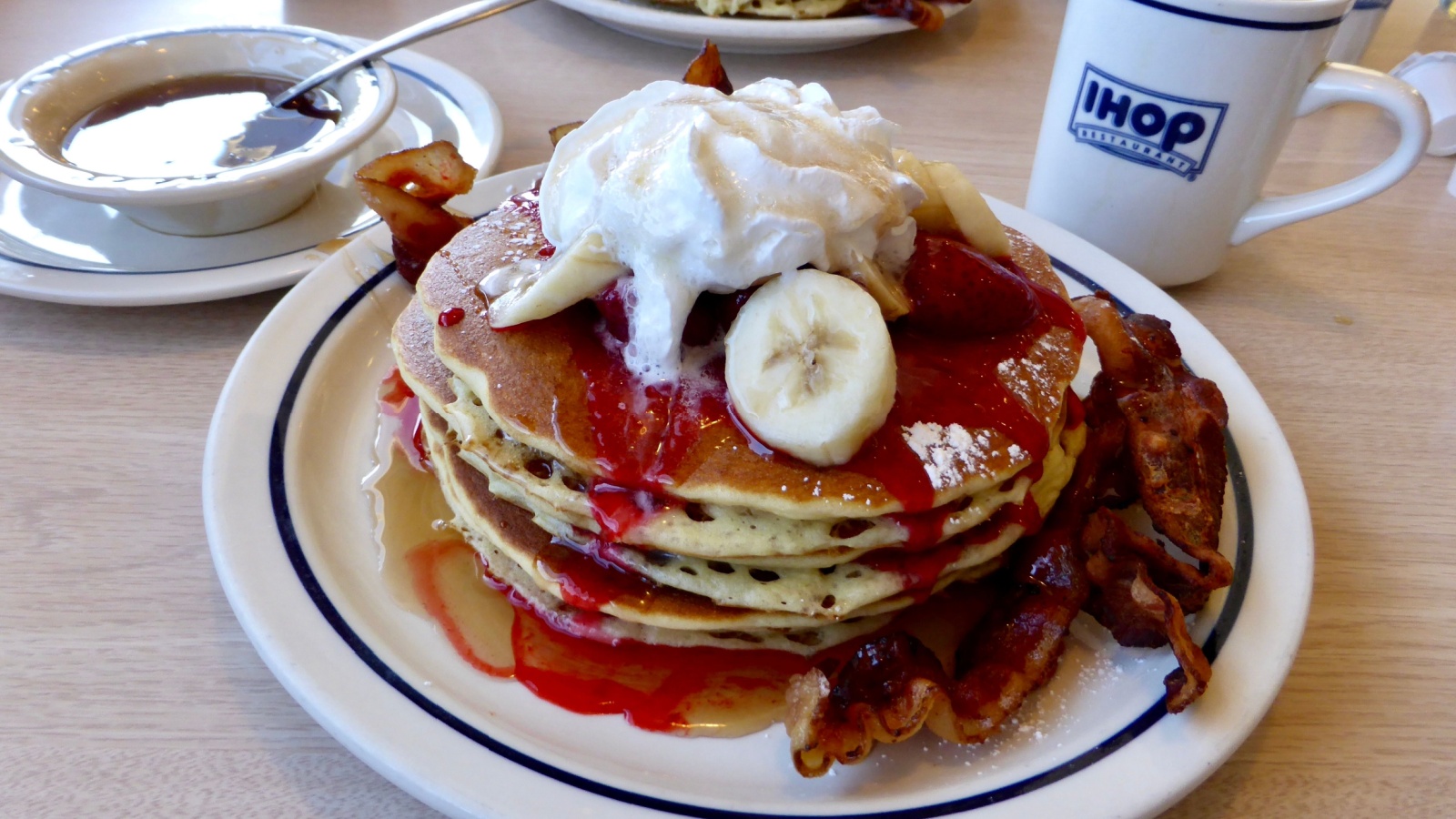
IHOP was supposed to bring the joy of American breakfast excess to Canada. Instead, it brought confusion about why pancakes could cost $20. Canadians complain about sticky tables, uneven service, and too-sweet toppings, but they still show up for the giant portions and all-day breakfast. It’s both loved for its indulgence and ridiculed for its execution. The chain feels like an imported novelty, a place you visit twice a year for nostalgia or hangover recovery. Despite the criticism, few can resist fluffy pancakes with syrup that tastes suspiciously like corn syrup, not maple.
Popeyes
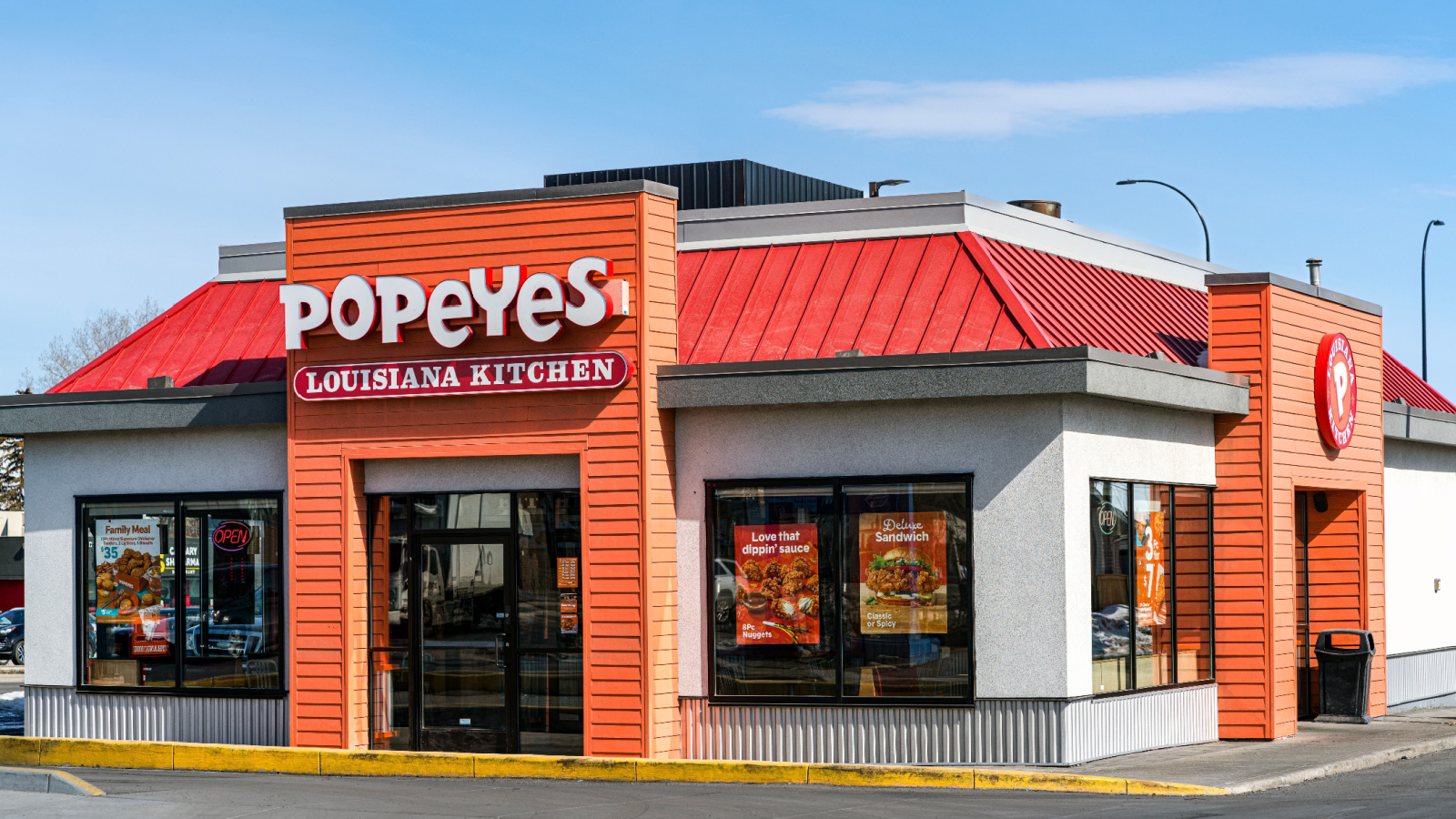
Popeyes earns both admiration and annoyance. Fans swear by the crispy chicken and spicy seasoning, but critics despise the long waits and inconsistent quality between locations. Canadians complain about greasy packaging, missing biscuits, and lack of healthier sides. Still, its Louisiana branding and viral sandwiches keep crowds lining up. When Popeyes first introduced its chicken sandwich, some locations sold out for days, a phenomenon Canadians mocked and participated in simultaneously. Its fast-food chaos people can’t help returning to, proving that even a love-hate relationship can be profitable when fried chickens involved.
Cheesecake Factory
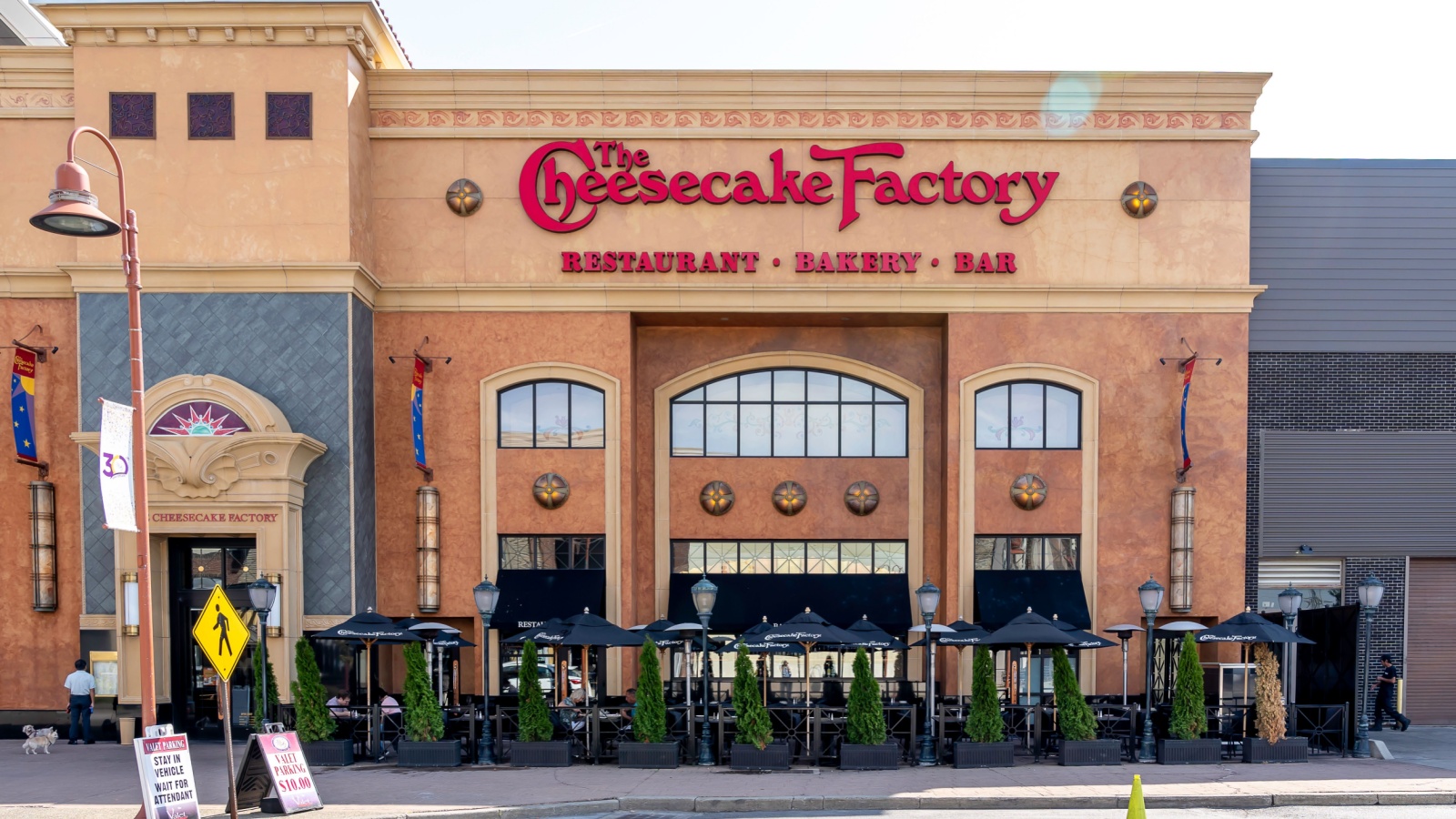
The Cheesecake Factory is known for huge portions, over-the-top décor, and a menu that reads like a novel. Canadians find it overwhelming but oddly satisfying. The prices are high, but so are the calorie counts, making it both indulgent and guilt-inducing. It’s where birthdays, first dates, and post-shopping meals collide in one chaotic dining experience. People complain about long waits and sensory overload, yet the lure of that 30-flavour cheesecake menu keeps them returning. It’s gluttony disguised as celebration, and that’s exactly why it works so well, even among those who pretend to hate it.
KFC
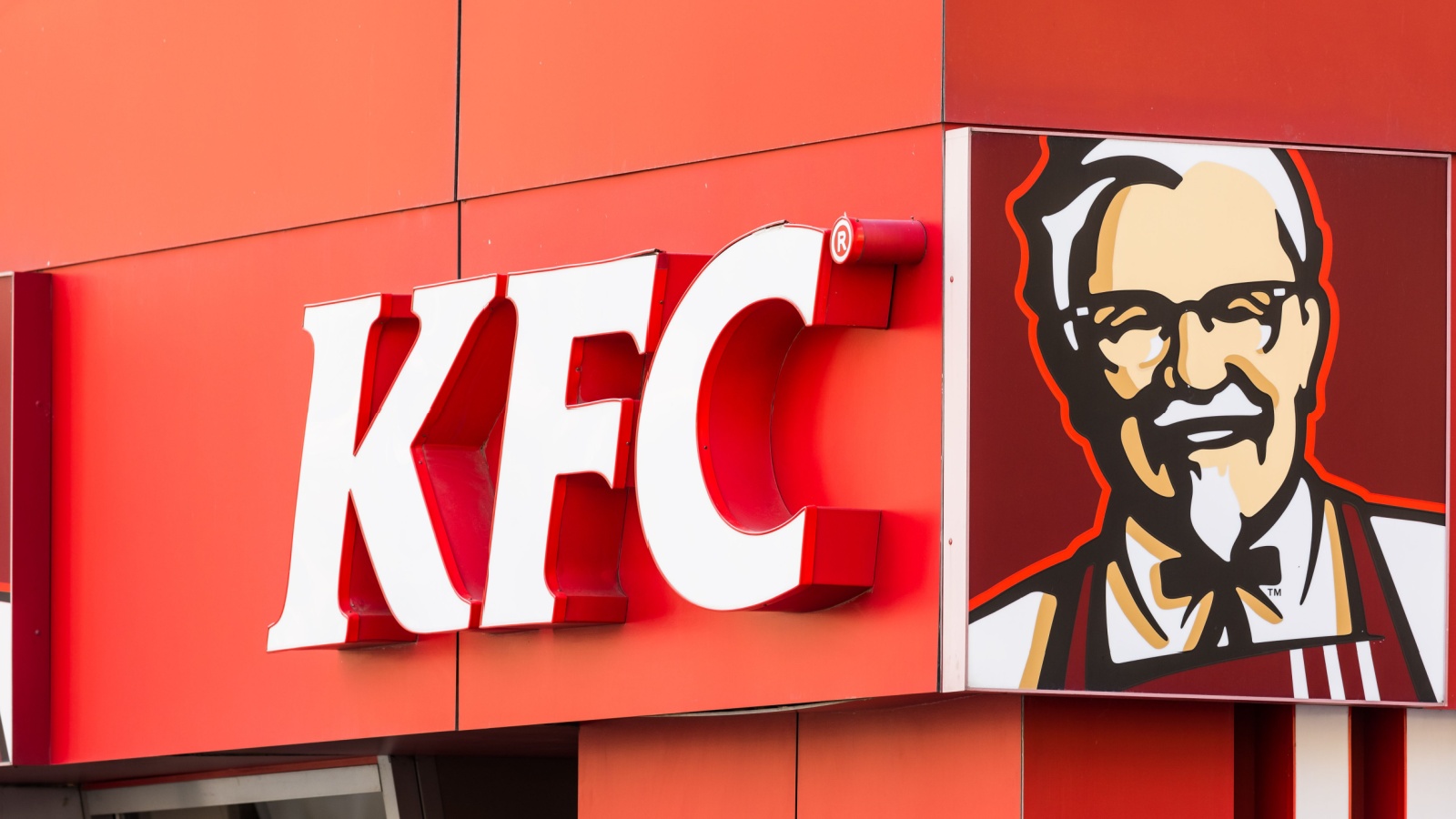
KFC once dominated the fried chicken scene, but its reputation has grown greasy over time. Canadians complain that it’s too oily, inconsistent, and often underwhelming compared to newer rivals like Mary Brown’s. Yet nostalgia keeps it alive, especially around holidays, when buckets become family staples. Many admit they regret it every time but somehow return for the secret recipe seasoning. It’s not the healthiest choice, and certainly not the fanciest, but that unmistakable smell of fried chicken still triggers cravings. KFC survives on a blend of nostalgia, habit, and a little culinary guilt.
Chili’s
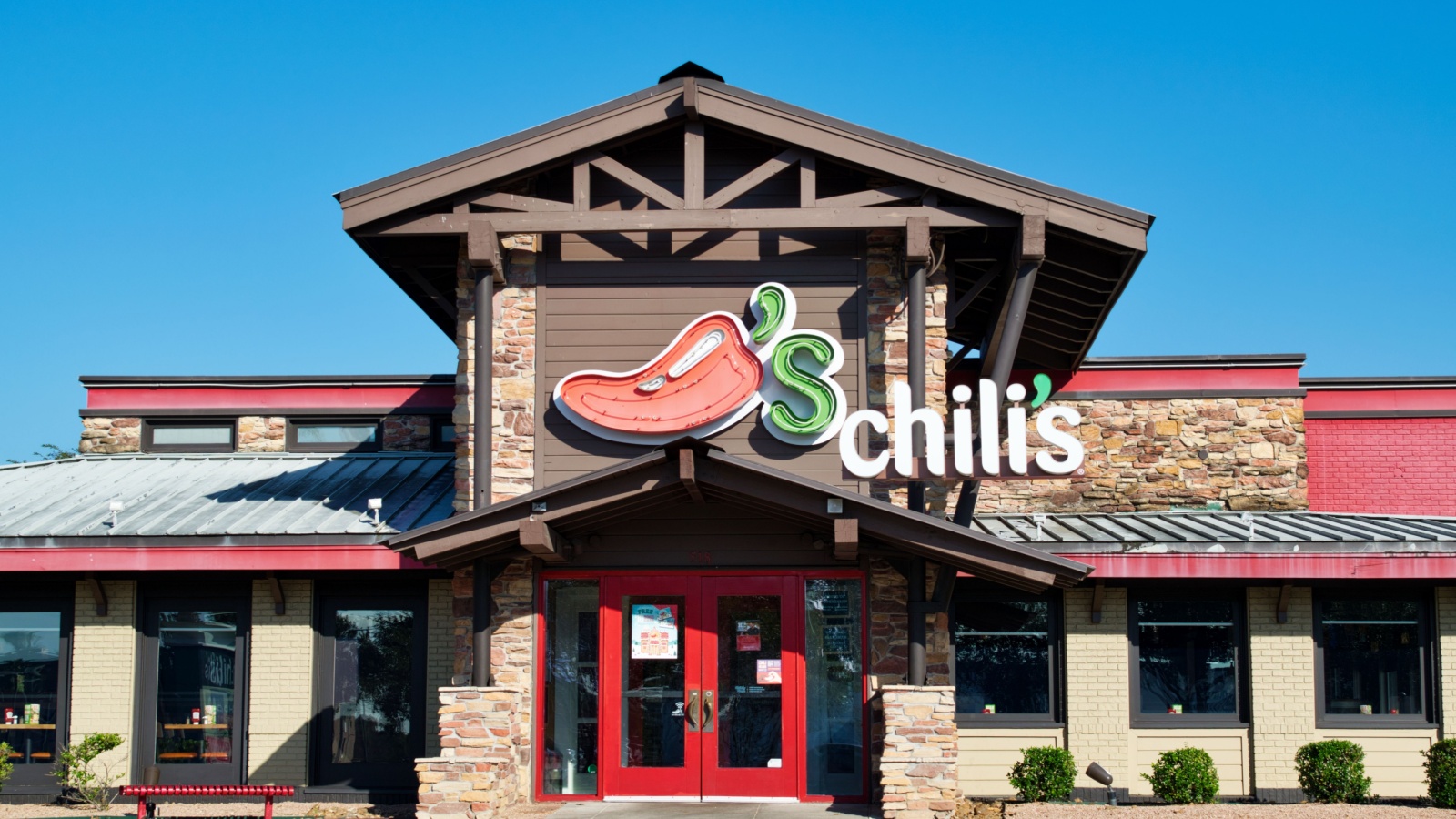
Chili’s markets itself as casual and fun, but critics say it feels dated and overpriced. Its Tex-Mex menu, heavy on cheese, salt, and fried everything, often divides diners. Yet Canadians keep showing up for fajitas that sizzle and margaritas served in fishbowl-sized glasses. There’s a certain comfort in knowing exactly what to expect, even if you’ll leave full of regret. It’s not gourmet dining, but it’s consistent and social, which counts for something. Chili’s may never win over food critics, but its unapologetic comfort food keeps it on the love-to-hate list.
Five Guys
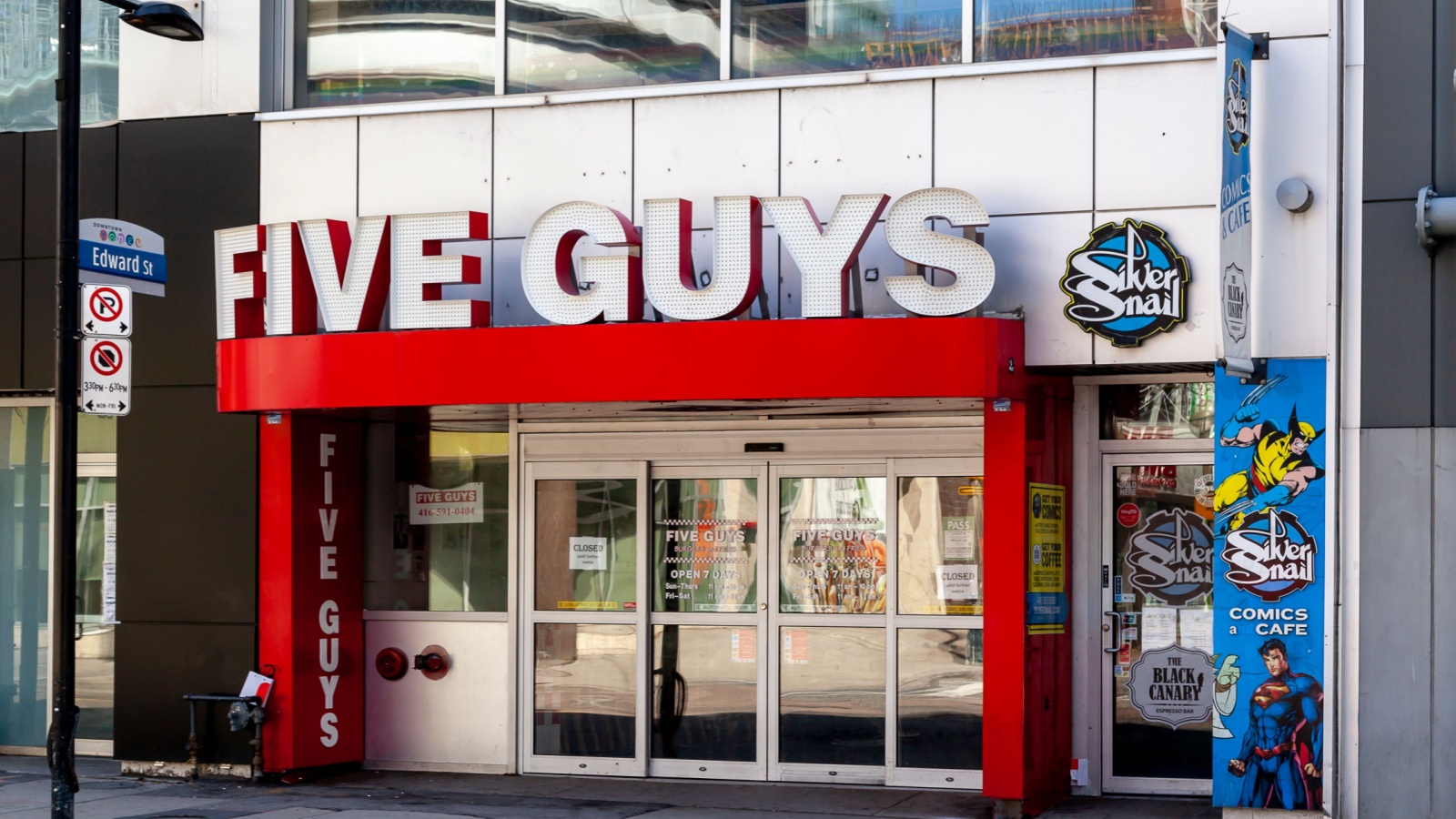
Five Guys came in promising high-quality burgers, and Canadians initially swooned, until they saw the price. Paying nearly $25 for a burger, fries, and drink makes many grumble, even if the food tastes better than most fast-food joints. The lack of drive-thrus and long waits add to the frustration. Yet those fries, cooked in peanut oil, remain addictive. It’s a chain that delivers great flavor wrapped in customer irritation. Canadians love to complain about how expensive it is, but few can resist when the craving for a “real burger” hits.
Cracker Barrel
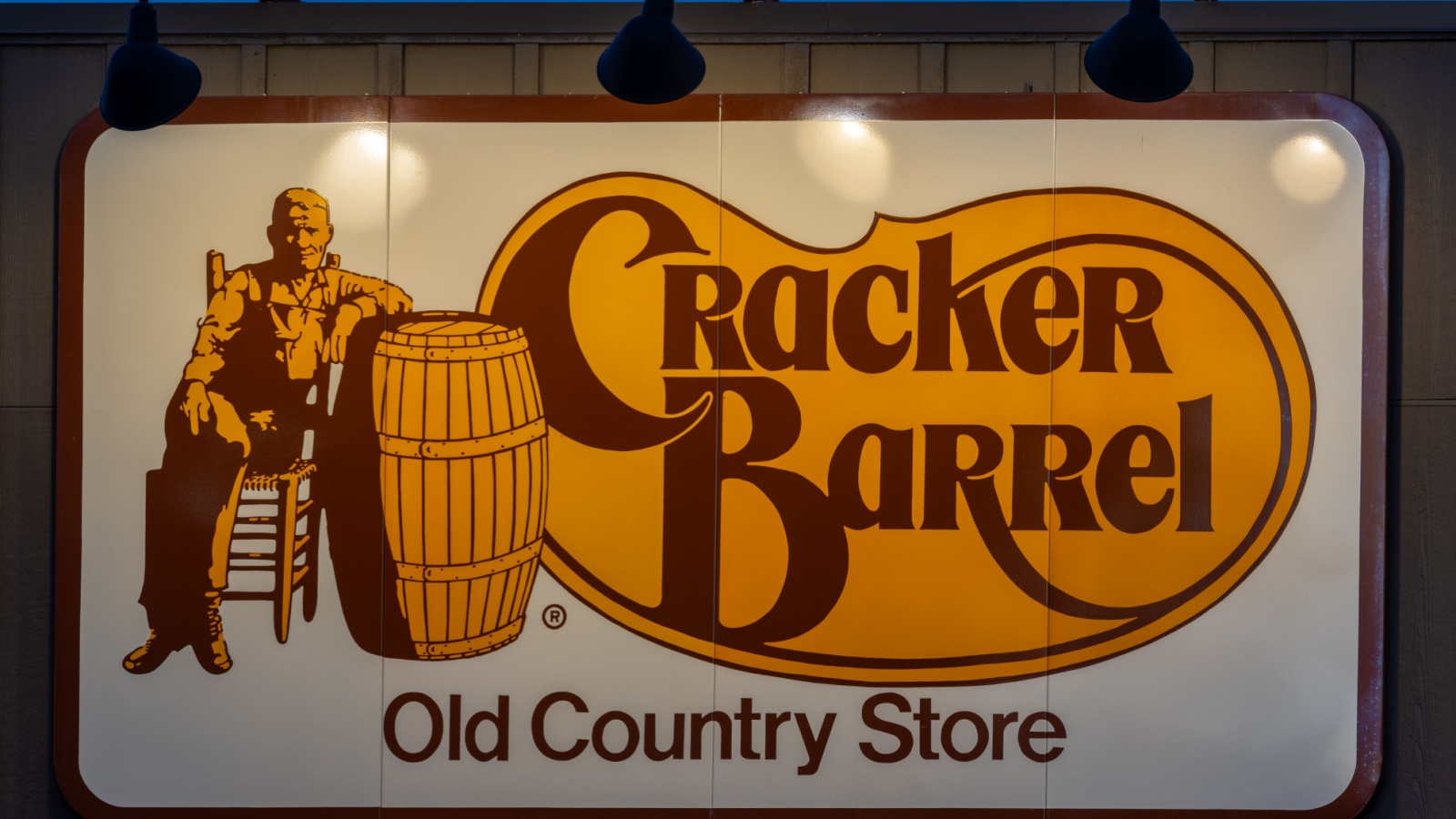
Cracker Barrel’s Americana vibe feels oddly out of place in Canada. Its country-store aesthetic, rocking chairs, and heavy breakfasts charm some but confuse others. Critics mock its overly nostalgic branding and calorie-dense menu, while fans appreciate the old-fashioned comfort food. It’s both a cultural curiosity and a guilty pleasure, offering fried everything with a side of nostalgia that doesn’t quite translate north of the border. Canadians visit once, joke about it later, and occasionally return when they want to feel like they’ve crossed into small-town Tennessee without leaving Ontario.
Red Lobster
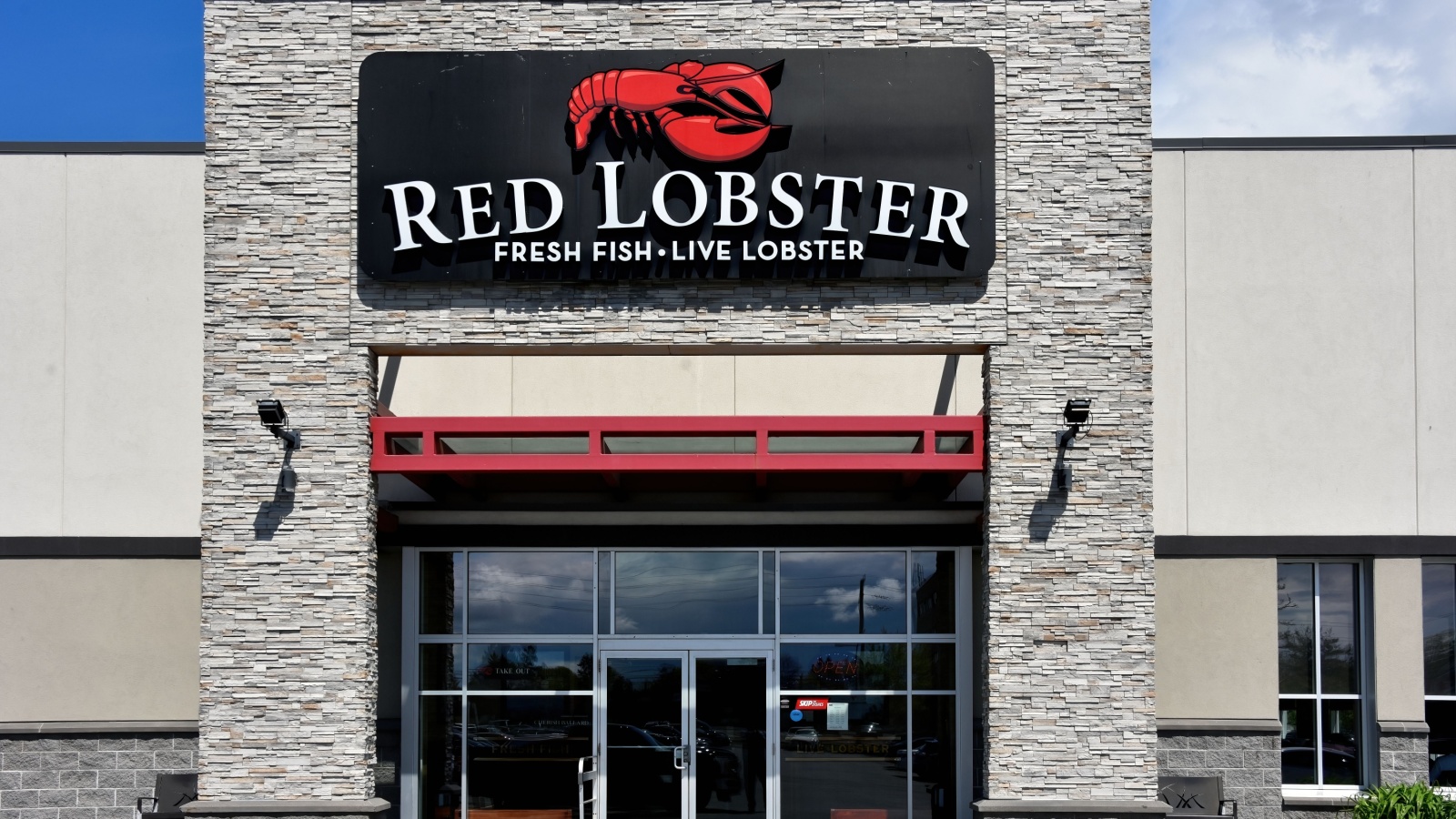
Red Lobster has long walked the line between special occasion dining and fast-casual seafood. Canadians complain about the frozen taste, high prices, and inconsistent service, yet the cheddar bay biscuits keep them hooked. It’s the kind of place people mock publicly but secretly crave. Birthdays, promotions, and Friday nights still find full booths of diners convincing themselves it’s fancy. The seafood may not be ocean-fresh, but the experience feels nostalgic and safe. Red Lobster remains the go-to spot for people who want to “treat themselves” without truly splurging.
Krispy Kreme
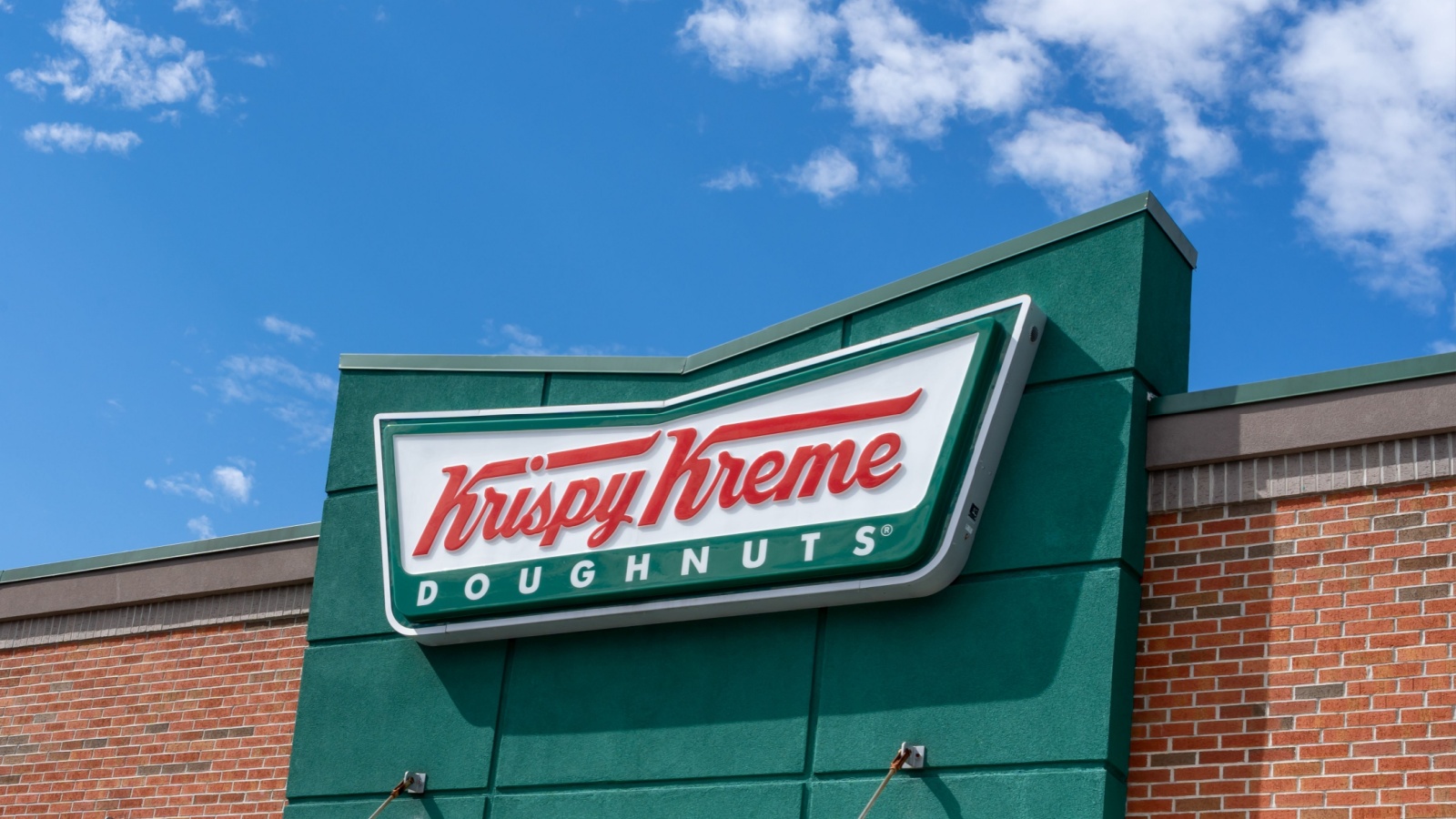
When Krispy Kreme first opened in Canada, people lined up around the block. Within a few years, the hype fizzled. Critics complained that the donuts were too sweet, too soft, and overpriced compared to local bakeries. Still, whenever a “Hot Now” sign lights up, the crowds magically reappear. It’s a sugary contradiction, too indulgent for regular consumption, yet too iconic to abandon. Canadians mock its sugar rush while simultaneously buying half a dozen “for later.” Krispy Kreme’s appeal lies in nostalgia and novelty, not practicality, which is why it never fully disappears from conversation.
Buffalo Wild Wings
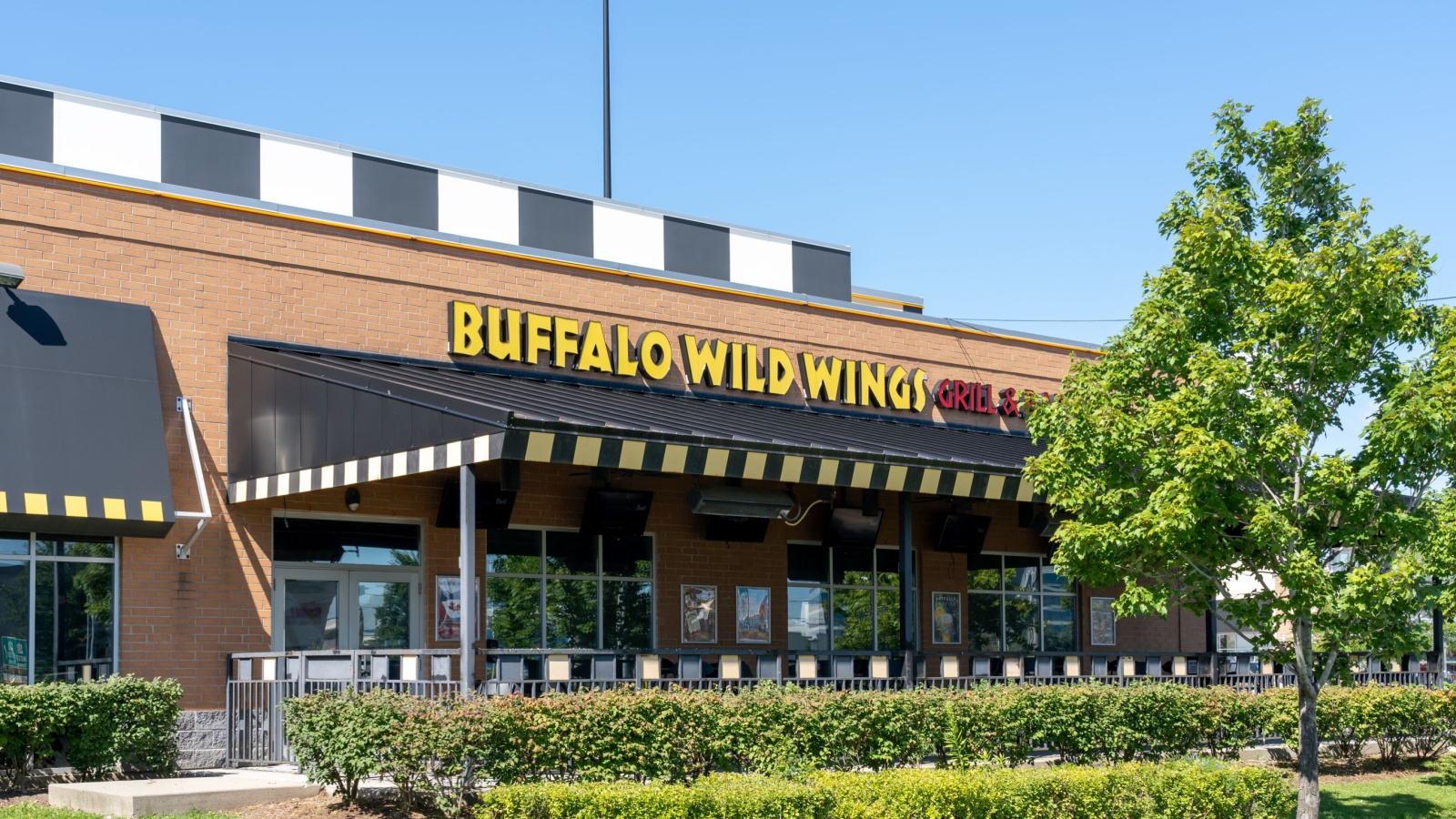
Buffalo Wild Wings has its loyal sports-bar crowd, but even they admit it’s a mixed experience. Prices fluctuate, wings can be inconsistent, and the noise level often resembles a stadium. Critics say it’s all hype with mediocre food, yet the combination of sports screens, beer, and group energy keeps people coming. It’s not about the cuisine, it’s about the vibe. Canadians may mock the American bravado, oversized portions, and over-sauced wings, but they still gather there for game nights and celebrations. Buffalo Wild Wings thrives on exactly what people claim to dislike.
21 Products Canadians Should Stockpile Before Tariffs Hit

If trade tensions escalate between Canada and the U.S., everyday essentials can suddenly disappear or skyrocket in price. Products like pantry basics and tech must-haves that depend on are deeply tied to cross-border supply chains and are likely to face various kinds of disruptions
21 Products Canadians Should Stockpile Before Tariffs Hit
Olive Garden
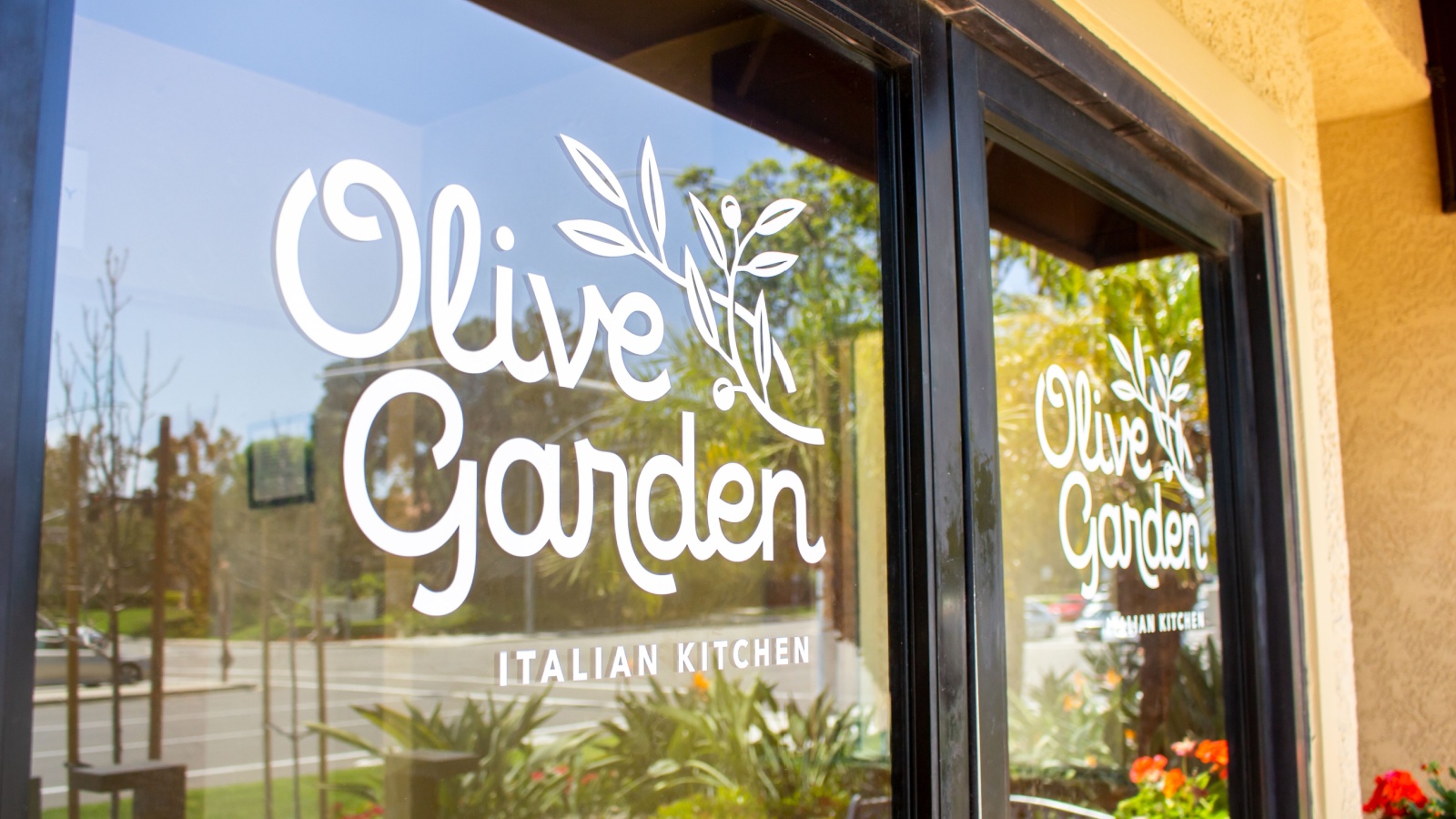
Olive Garden markets itself as “family-style Italian,” but Canadians often question whether endless breadsticks count as authentic cuisine. Still, that unlimited soup-salad-breadstick combo keeps people coming back. Many grumble about microwaved pasta and overly salted sauces, but others quietly admit it’s a comfort spot for affordable group dinners. It’s not fine dining, but it hits a specific craving between payday takeout and fancy restaurants. The chain has even become a cultural joke, but the parking lots stay full, proof that Canadians might not trust its “authentic Italian” tagline, yet they trust it enough to keep eating there.
Chipotle

Chipotle entered Canada promising fresh, customizable Mexican food, something that sounded great until people saw the prices. Canadians quickly noticed they were paying nearly $18 for a burrito and guac that costs extra. While the food quality is praised, the portions and value often aren’t. Complaints about line congestion and inconsistent spice levels abound, but it remains a lunchtime favourite for downtown workers. There’s also mild resentment toward its “healthier fast food” branding, which feels ironic once you realize how calorie-dense those burritos are. Still, no one’s quitting that smoky chipotle mayo anytime soon.
Target

Target’s short-lived Canadian venture is still legendary, for all the wrong reasons. When it opened in 2013, excitement was sky-high. Then came the empty shelves, higher-than-expected prices, and lack of U.S. product selection. Within two years, every store shut down. Canadians mock the brand for its overconfidence but still admit to missing its aesthetic and product variety. Ironically, many still cross the border just to shop at Target, proving that the love-hate dynamic lives on. It’s remembered as the ultimate corporate heartbreak story, where anticipation turned into disappointment faster than any clearance sale.
Taco Bell

Taco Bell’s reputation in Canada is as messy as its tacos. Fans defend its late-night appeal, while critics dismiss it as low-quality fast food pretending to be Mexican cuisine. Many complain about bland meat or ingredients that feel processed beyond recognition. Yet somehow, those cheesy Gordita crunches keep selling. The brand thrives on nostalgia and affordability, even if most customers wouldn’t admit it in public. Whether it’s a guilty pleasure after a night out or a spontaneous craving, Taco Bell remains both mocked and loved in equal measure, proof that taste buds don’t always care about dignity.
Applebee’s

Applebee’s markets itself as the “neighborhood grill,” but many Canadians think of it as the place for average food at premium prices. Its menus are massive, its cocktails sugary, and its décor eternally stuck in 2005. Critics often say it lacks personality, yet it somehow continues to draw in families who want predictable, safe dining. It’s comfort food for the indecisive: a little bit of everything, nothing truly special. Still, its boneless wings and happy hour deals maintain loyal followers. Applebee’s may never win awards, but it wins enough stomachs to stay relevant.
Subway

Subway markets itself as the “healthier” fast-food option, but Canadians have long stopped buying that idea. Between limp lettuce, inconsistent portioning, and bread that barely resembles actual bread, Subway earns more eye rolls than praise. Yet, during a workday lunch rush, its convenience wins every time. People love to complain about soggy sandwiches, but that footlong remains a dependable go-to. There’s something almost ritualistic about pretending to choose “fresh” ingredients while watching your meal wrapped in paper. Subway isn’t anyone’s favourite, but it’s the fallback choice that nobody truly quits.
IHOP

IHOP was supposed to bring the joy of American breakfast excess to Canada. Instead, it brought confusion about why pancakes could cost $20. Canadians complain about sticky tables, uneven service, and too-sweet toppings, but they still show up for the giant portions and all-day breakfast. It’s both loved for its indulgence and ridiculed for its execution. The chain feels like an imported novelty, a place you visit twice a year for nostalgia or hangover recovery. Despite the criticism, few can resist fluffy pancakes with syrup that tastes suspiciously like corn syrup, not maple.
Popeyes

Popeyes earns both admiration and annoyance. Fans swear by the crispy chicken and spicy seasoning, but critics despise the long waits and inconsistent quality between locations. Canadians complain about greasy packaging, missing biscuits, and lack of healthier sides. Still, its Louisiana branding and viral sandwiches keep crowds lining up. When Popeyes first introduced its chicken sandwich, some locations sold out for days, a phenomenon Canadians mocked and participated in simultaneously. Its fast-food chaos people can’t help returning to, proving that even a love-hate relationship can be profitable when fried chickens involved.
Cheesecake Factory

The Cheesecake Factory is known for huge portions, over-the-top décor, and a menu that reads like a novel. Canadians find it overwhelming but oddly satisfying. The prices are high, but so are the calorie counts, making it both indulgent and guilt-inducing. It’s where birthdays, first dates, and post-shopping meals collide in one chaotic dining experience. People complain about long waits and sensory overload, yet the lure of that 30-flavour cheesecake menu keeps them returning. It’s gluttony disguised as celebration, and that’s exactly why it works so well, even among those who pretend to hate it.
KFC

KFC once dominated the fried chicken scene, but its reputation has grown greasy over time. Canadians complain that it’s too oily, inconsistent, and often underwhelming compared to newer rivals like Mary Brown’s. Yet nostalgia keeps it alive, especially around holidays, when buckets become family staples. Many admit they regret it every time but somehow return for the secret recipe seasoning. It’s not the healthiest choice, and certainly not the fanciest, but that unmistakable smell of fried chicken still triggers cravings. KFC survives on a blend of nostalgia, habit, and a little culinary guilt.
Chili’s

Chili’s markets itself as casual and fun, but critics say it feels dated and overpriced. Its Tex-Mex menu, heavy on cheese, salt, and fried everything, often divides diners. Yet Canadians keep showing up for fajitas that sizzle and margaritas served in fishbowl-sized glasses. There’s a certain comfort in knowing exactly what to expect, even if you’ll leave full of regret. It’s not gourmet dining, but it’s consistent and social, which counts for something. Chili’s may never win over food critics, but its unapologetic comfort food keeps it on the love-to-hate list.
Five Guys

Five Guys came in promising high-quality burgers, and Canadians initially swooned, until they saw the price. Paying nearly $25 for a burger, fries, and drink makes many grumble, even if the food tastes better than most fast-food joints. The lack of drive-thrus and long waits add to the frustration. Yet those fries, cooked in peanut oil, remain addictive. It’s a chain that delivers great flavor wrapped in customer irritation. Canadians love to complain about how expensive it is, but few can resist when the craving for a “real burger” hits.
Cracker Barrel

Cracker Barrel’s Americana vibe feels oddly out of place in Canada. Its country-store aesthetic, rocking chairs, and heavy breakfasts charm some but confuse others. Critics mock its overly nostalgic branding and calorie-dense menu, while fans appreciate the old-fashioned comfort food. It’s both a cultural curiosity and a guilty pleasure, offering fried everything with a side of nostalgia that doesn’t quite translate north of the border. Canadians visit once, joke about it later, and occasionally return when they want to feel like they’ve crossed into small-town Tennessee without leaving Ontario.
Red Lobster

Red Lobster has long walked the line between special occasion dining and fast-casual seafood. Canadians complain about the frozen taste, high prices, and inconsistent service, yet the cheddar bay biscuits keep them hooked. It’s the kind of place people mock publicly but secretly crave. Birthdays, promotions, and Friday nights still find full booths of diners convincing themselves it’s fancy. The seafood may not be ocean-fresh, but the experience feels nostalgic and safe. Red Lobster remains the go-to spot for people who want to “treat themselves” without truly splurging.
Krispy Kreme

When Krispy Kreme first opened in Canada, people lined up around the block. Within a few years, the hype fizzled. Critics complained that the donuts were too sweet, too soft, and overpriced compared to local bakeries. Still, whenever a “Hot Now” sign lights up, the crowds magically reappear. It’s a sugary contradiction, too indulgent for regular consumption, yet too iconic to abandon. Canadians mock its sugar rush while simultaneously buying half a dozen “for later.” Krispy Kreme’s appeal lies in nostalgia and novelty, not practicality, which is why it never fully disappears from conversation.
Buffalo Wild Wings

Buffalo Wild Wings has its loyal sports-bar crowd, but even they admit it’s a mixed experience. Prices fluctuate, wings can be inconsistent, and the noise level often resembles a stadium. Critics say it’s all hype with mediocre food, yet the combination of sports screens, beer, and group energy keeps people coming. It’s not about the cuisine, it’s about the vibe. Canadians may mock the American bravado, oversized portions, and over-sauced wings, but they still gather there for game nights and celebrations. Buffalo Wild Wings thrives on exactly what people claim to dislike.
21 Products Canadians Should Stockpile Before Tariffs Hit

If trade tensions escalate between Canada and the U.S., everyday essentials can suddenly disappear or skyrocket in price. Products like pantry basics and tech must-haves that depend on are deeply tied to cross-border supply chains and are likely to face various kinds of disruptions
21 Products Canadians Should Stockpile Before Tariffs Hit
Dunkin’ Donuts
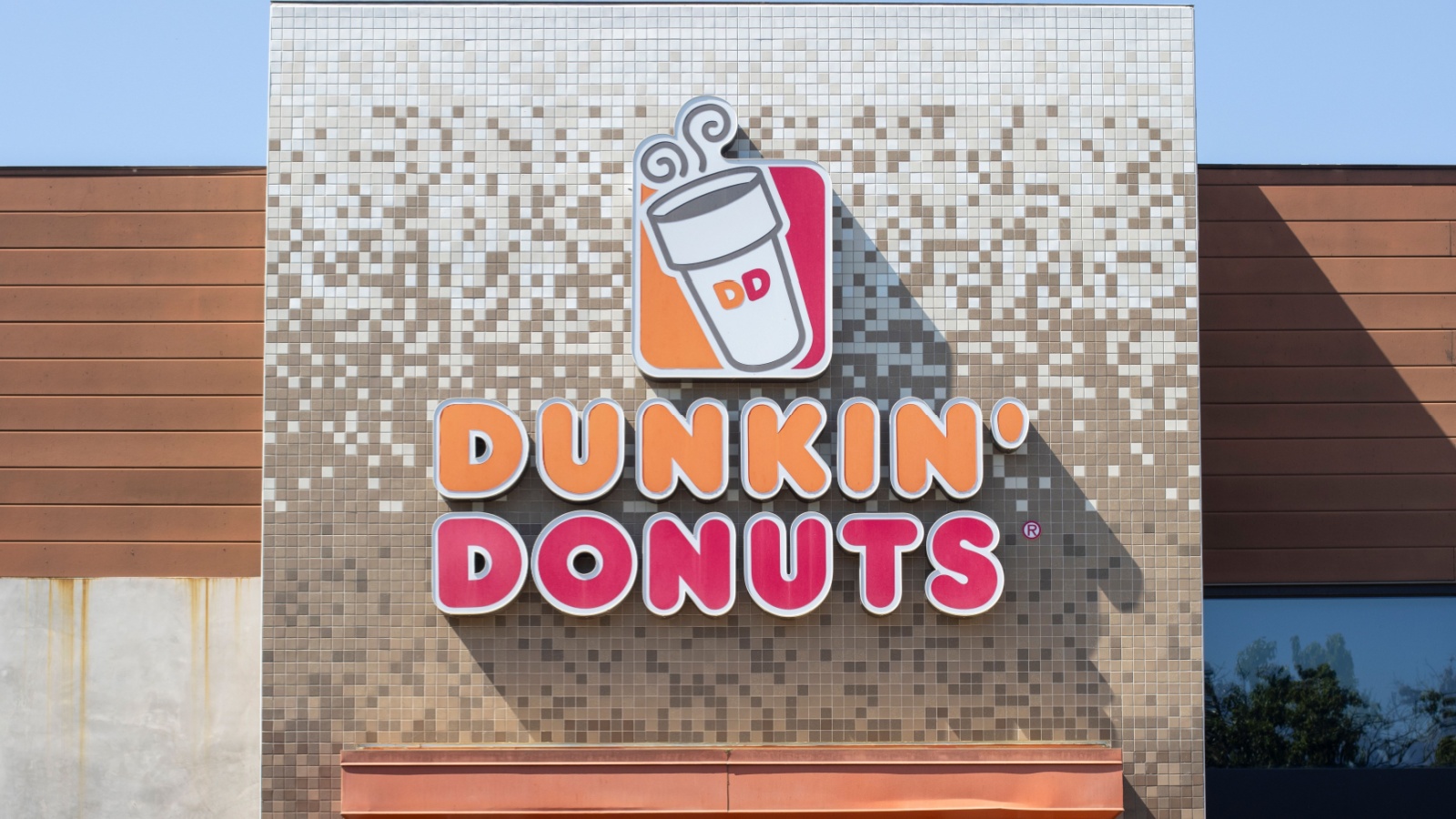
Dunkin’ tried to conquer the Canadian coffee scene years ago but failed spectacularly. Its overly sweet donuts, watery coffee, and overly “American” branding never clicked with locals who already had Tim Hortons loyalty. Despite its exit, Canadians who travel to the U.S. still stop by out of curiosity, then return with reminders of why it flopped. Its return has been rumored multiple times, but most Canadians agree that the pink-orange empire should stay where it belongs. Dunkin’ remains the prime example of a brand that Canada rejected yet still manages to spark nostalgic chatter.
Olive Garden

Olive Garden markets itself as “family-style Italian,” but Canadians often question whether endless breadsticks count as authentic cuisine. Still, that unlimited soup-salad-breadstick combo keeps people coming back. Many grumble about microwaved pasta and overly salted sauces, but others quietly admit it’s a comfort spot for affordable group dinners. It’s not fine dining, but it hits a specific craving between payday takeout and fancy restaurants. The chain has even become a cultural joke, but the parking lots stay full, proof that Canadians might not trust its “authentic Italian” tagline, yet they trust it enough to keep eating there.
Chipotle

Chipotle entered Canada promising fresh, customizable Mexican food, something that sounded great until people saw the prices. Canadians quickly noticed they were paying nearly $18 for a burrito and guac that costs extra. While the food quality is praised, the portions and value often aren’t. Complaints about line congestion and inconsistent spice levels abound, but it remains a lunchtime favourite for downtown workers. There’s also mild resentment toward its “healthier fast food” branding, which feels ironic once you realize how calorie-dense those burritos are. Still, no one’s quitting that smoky chipotle mayo anytime soon.
Target

Target’s short-lived Canadian venture is still legendary, for all the wrong reasons. When it opened in 2013, excitement was sky-high. Then came the empty shelves, higher-than-expected prices, and lack of U.S. product selection. Within two years, every store shut down. Canadians mock the brand for its overconfidence but still admit to missing its aesthetic and product variety. Ironically, many still cross the border just to shop at Target, proving that the love-hate dynamic lives on. It’s remembered as the ultimate corporate heartbreak story, where anticipation turned into disappointment faster than any clearance sale.
Taco Bell

Taco Bell’s reputation in Canada is as messy as its tacos. Fans defend its late-night appeal, while critics dismiss it as low-quality fast food pretending to be Mexican cuisine. Many complain about bland meat or ingredients that feel processed beyond recognition. Yet somehow, those cheesy Gordita crunches keep selling. The brand thrives on nostalgia and affordability, even if most customers wouldn’t admit it in public. Whether it’s a guilty pleasure after a night out or a spontaneous craving, Taco Bell remains both mocked and loved in equal measure, proof that taste buds don’t always care about dignity.
Applebee’s

Applebee’s markets itself as the “neighborhood grill,” but many Canadians think of it as the place for average food at premium prices. Its menus are massive, its cocktails sugary, and its décor eternally stuck in 2005. Critics often say it lacks personality, yet it somehow continues to draw in families who want predictable, safe dining. It’s comfort food for the indecisive: a little bit of everything, nothing truly special. Still, its boneless wings and happy hour deals maintain loyal followers. Applebee’s may never win awards, but it wins enough stomachs to stay relevant.
Subway

Subway markets itself as the “healthier” fast-food option, but Canadians have long stopped buying that idea. Between limp lettuce, inconsistent portioning, and bread that barely resembles actual bread, Subway earns more eye rolls than praise. Yet, during a workday lunch rush, its convenience wins every time. People love to complain about soggy sandwiches, but that footlong remains a dependable go-to. There’s something almost ritualistic about pretending to choose “fresh” ingredients while watching your meal wrapped in paper. Subway isn’t anyone’s favourite, but it’s the fallback choice that nobody truly quits.
IHOP

IHOP was supposed to bring the joy of American breakfast excess to Canada. Instead, it brought confusion about why pancakes could cost $20. Canadians complain about sticky tables, uneven service, and too-sweet toppings, but they still show up for the giant portions and all-day breakfast. It’s both loved for its indulgence and ridiculed for its execution. The chain feels like an imported novelty, a place you visit twice a year for nostalgia or hangover recovery. Despite the criticism, few can resist fluffy pancakes with syrup that tastes suspiciously like corn syrup, not maple.
Popeyes

Popeyes earns both admiration and annoyance. Fans swear by the crispy chicken and spicy seasoning, but critics despise the long waits and inconsistent quality between locations. Canadians complain about greasy packaging, missing biscuits, and lack of healthier sides. Still, its Louisiana branding and viral sandwiches keep crowds lining up. When Popeyes first introduced its chicken sandwich, some locations sold out for days, a phenomenon Canadians mocked and participated in simultaneously. Its fast-food chaos people can’t help returning to, proving that even a love-hate relationship can be profitable when fried chickens involved.
Cheesecake Factory

The Cheesecake Factory is known for huge portions, over-the-top décor, and a menu that reads like a novel. Canadians find it overwhelming but oddly satisfying. The prices are high, but so are the calorie counts, making it both indulgent and guilt-inducing. It’s where birthdays, first dates, and post-shopping meals collide in one chaotic dining experience. People complain about long waits and sensory overload, yet the lure of that 30-flavour cheesecake menu keeps them returning. It’s gluttony disguised as celebration, and that’s exactly why it works so well, even among those who pretend to hate it.
KFC

KFC once dominated the fried chicken scene, but its reputation has grown greasy over time. Canadians complain that it’s too oily, inconsistent, and often underwhelming compared to newer rivals like Mary Brown’s. Yet nostalgia keeps it alive, especially around holidays, when buckets become family staples. Many admit they regret it every time but somehow return for the secret recipe seasoning. It’s not the healthiest choice, and certainly not the fanciest, but that unmistakable smell of fried chicken still triggers cravings. KFC survives on a blend of nostalgia, habit, and a little culinary guilt.
Chili’s

Chili’s markets itself as casual and fun, but critics say it feels dated and overpriced. Its Tex-Mex menu, heavy on cheese, salt, and fried everything, often divides diners. Yet Canadians keep showing up for fajitas that sizzle and margaritas served in fishbowl-sized glasses. There’s a certain comfort in knowing exactly what to expect, even if you’ll leave full of regret. It’s not gourmet dining, but it’s consistent and social, which counts for something. Chili’s may never win over food critics, but its unapologetic comfort food keeps it on the love-to-hate list.
Five Guys

Five Guys came in promising high-quality burgers, and Canadians initially swooned, until they saw the price. Paying nearly $25 for a burger, fries, and drink makes many grumble, even if the food tastes better than most fast-food joints. The lack of drive-thrus and long waits add to the frustration. Yet those fries, cooked in peanut oil, remain addictive. It’s a chain that delivers great flavor wrapped in customer irritation. Canadians love to complain about how expensive it is, but few can resist when the craving for a “real burger” hits.
Cracker Barrel

Cracker Barrel’s Americana vibe feels oddly out of place in Canada. Its country-store aesthetic, rocking chairs, and heavy breakfasts charm some but confuse others. Critics mock its overly nostalgic branding and calorie-dense menu, while fans appreciate the old-fashioned comfort food. It’s both a cultural curiosity and a guilty pleasure, offering fried everything with a side of nostalgia that doesn’t quite translate north of the border. Canadians visit once, joke about it later, and occasionally return when they want to feel like they’ve crossed into small-town Tennessee without leaving Ontario.
Red Lobster

Red Lobster has long walked the line between special occasion dining and fast-casual seafood. Canadians complain about the frozen taste, high prices, and inconsistent service, yet the cheddar bay biscuits keep them hooked. It’s the kind of place people mock publicly but secretly crave. Birthdays, promotions, and Friday nights still find full booths of diners convincing themselves it’s fancy. The seafood may not be ocean-fresh, but the experience feels nostalgic and safe. Red Lobster remains the go-to spot for people who want to “treat themselves” without truly splurging.
Krispy Kreme

When Krispy Kreme first opened in Canada, people lined up around the block. Within a few years, the hype fizzled. Critics complained that the donuts were too sweet, too soft, and overpriced compared to local bakeries. Still, whenever a “Hot Now” sign lights up, the crowds magically reappear. It’s a sugary contradiction, too indulgent for regular consumption, yet too iconic to abandon. Canadians mock its sugar rush while simultaneously buying half a dozen “for later.” Krispy Kreme’s appeal lies in nostalgia and novelty, not practicality, which is why it never fully disappears from conversation.
Buffalo Wild Wings

Buffalo Wild Wings has its loyal sports-bar crowd, but even they admit it’s a mixed experience. Prices fluctuate, wings can be inconsistent, and the noise level often resembles a stadium. Critics say it’s all hype with mediocre food, yet the combination of sports screens, beer, and group energy keeps people coming. It’s not about the cuisine, it’s about the vibe. Canadians may mock the American bravado, oversized portions, and over-sauced wings, but they still gather there for game nights and celebrations. Buffalo Wild Wings thrives on exactly what people claim to dislike.
21 Products Canadians Should Stockpile Before Tariffs Hit

If trade tensions escalate between Canada and the U.S., everyday essentials can suddenly disappear or skyrocket in price. Products like pantry basics and tech must-haves that depend on are deeply tied to cross-border supply chains and are likely to face various kinds of disruptions
21 Products Canadians Should Stockpile Before Tariffs Hit
Walmart
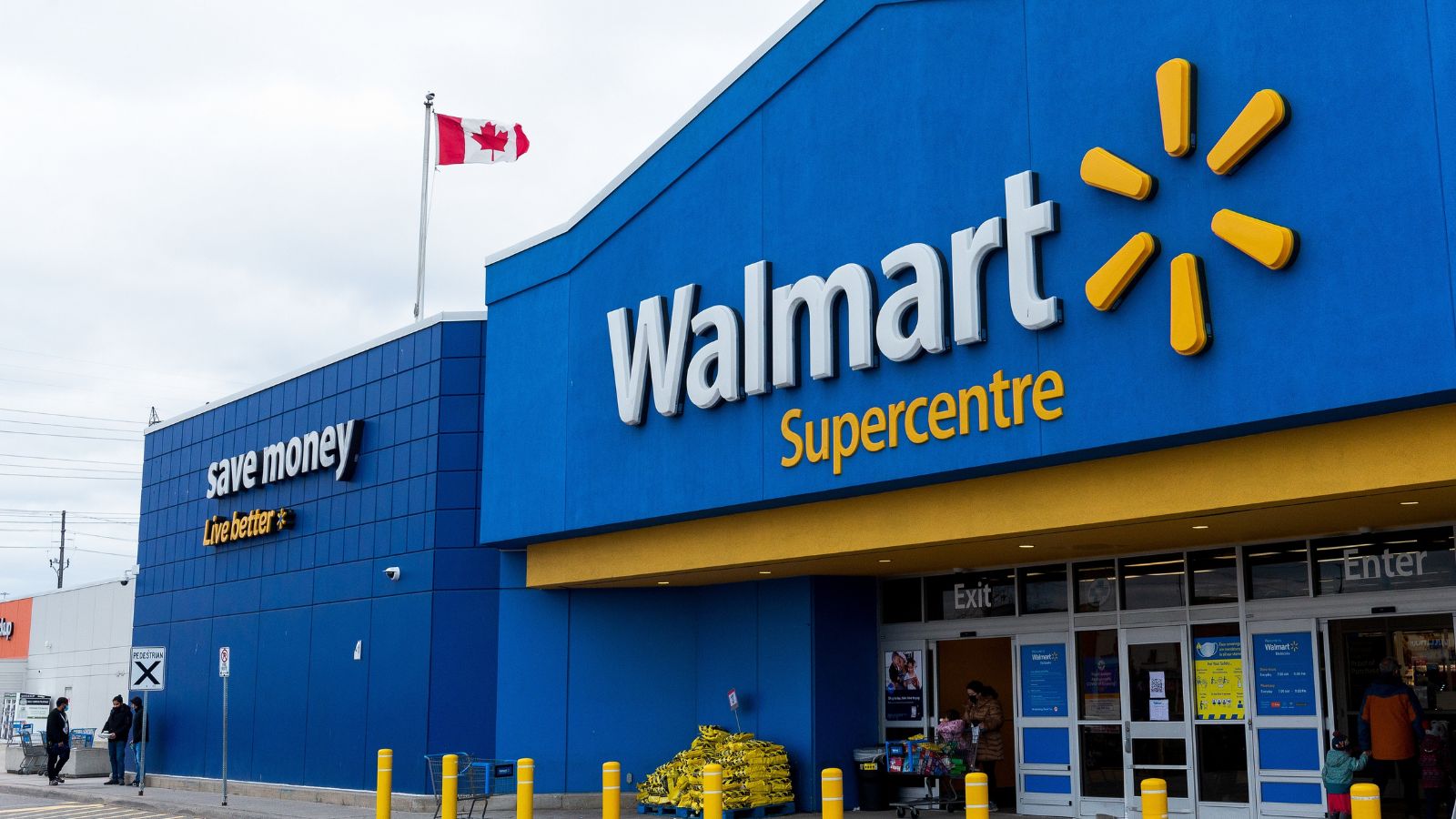
Walmart has mastered the art of drawing shoppers who love to hate it. Canadians call it chaotic, understocked, and occasionally soul-crushing, but they still show up for the $5 deals and bulk snacks. Critics argue it’s the reason local stores shut down and that its checkout lines feel endless. Still, few can resist a one-stop shop for groceries, socks, shampoo, and discounted furniture. It’s not glamorous, but when payday is far away, Walmart feels like salvation. The company knows this, and that’s exactly why its fluorescent aisles remain packed no matter how many people complain online.
Dunkin’ Donuts

Dunkin’ tried to conquer the Canadian coffee scene years ago but failed spectacularly. Its overly sweet donuts, watery coffee, and overly “American” branding never clicked with locals who already had Tim Hortons loyalty. Despite its exit, Canadians who travel to the U.S. still stop by out of curiosity, then return with reminders of why it flopped. Its return has been rumored multiple times, but most Canadians agree that the pink-orange empire should stay where it belongs. Dunkin’ remains the prime example of a brand that Canada rejected yet still manages to spark nostalgic chatter.
Olive Garden

Olive Garden markets itself as “family-style Italian,” but Canadians often question whether endless breadsticks count as authentic cuisine. Still, that unlimited soup-salad-breadstick combo keeps people coming back. Many grumble about microwaved pasta and overly salted sauces, but others quietly admit it’s a comfort spot for affordable group dinners. It’s not fine dining, but it hits a specific craving between payday takeout and fancy restaurants. The chain has even become a cultural joke, but the parking lots stay full, proof that Canadians might not trust its “authentic Italian” tagline, yet they trust it enough to keep eating there.
Chipotle

Chipotle entered Canada promising fresh, customizable Mexican food, something that sounded great until people saw the prices. Canadians quickly noticed they were paying nearly $18 for a burrito and guac that costs extra. While the food quality is praised, the portions and value often aren’t. Complaints about line congestion and inconsistent spice levels abound, but it remains a lunchtime favourite for downtown workers. There’s also mild resentment toward its “healthier fast food” branding, which feels ironic once you realize how calorie-dense those burritos are. Still, no one’s quitting that smoky chipotle mayo anytime soon.
Target

Target’s short-lived Canadian venture is still legendary, for all the wrong reasons. When it opened in 2013, excitement was sky-high. Then came the empty shelves, higher-than-expected prices, and lack of U.S. product selection. Within two years, every store shut down. Canadians mock the brand for its overconfidence but still admit to missing its aesthetic and product variety. Ironically, many still cross the border just to shop at Target, proving that the love-hate dynamic lives on. It’s remembered as the ultimate corporate heartbreak story, where anticipation turned into disappointment faster than any clearance sale.
Taco Bell

Taco Bell’s reputation in Canada is as messy as its tacos. Fans defend its late-night appeal, while critics dismiss it as low-quality fast food pretending to be Mexican cuisine. Many complain about bland meat or ingredients that feel processed beyond recognition. Yet somehow, those cheesy Gordita crunches keep selling. The brand thrives on nostalgia and affordability, even if most customers wouldn’t admit it in public. Whether it’s a guilty pleasure after a night out or a spontaneous craving, Taco Bell remains both mocked and loved in equal measure, proof that taste buds don’t always care about dignity.
Applebee’s

Applebee’s markets itself as the “neighborhood grill,” but many Canadians think of it as the place for average food at premium prices. Its menus are massive, its cocktails sugary, and its décor eternally stuck in 2005. Critics often say it lacks personality, yet it somehow continues to draw in families who want predictable, safe dining. It’s comfort food for the indecisive: a little bit of everything, nothing truly special. Still, its boneless wings and happy hour deals maintain loyal followers. Applebee’s may never win awards, but it wins enough stomachs to stay relevant.
Subway

Subway markets itself as the “healthier” fast-food option, but Canadians have long stopped buying that idea. Between limp lettuce, inconsistent portioning, and bread that barely resembles actual bread, Subway earns more eye rolls than praise. Yet, during a workday lunch rush, its convenience wins every time. People love to complain about soggy sandwiches, but that footlong remains a dependable go-to. There’s something almost ritualistic about pretending to choose “fresh” ingredients while watching your meal wrapped in paper. Subway isn’t anyone’s favourite, but it’s the fallback choice that nobody truly quits.
IHOP

IHOP was supposed to bring the joy of American breakfast excess to Canada. Instead, it brought confusion about why pancakes could cost $20. Canadians complain about sticky tables, uneven service, and too-sweet toppings, but they still show up for the giant portions and all-day breakfast. It’s both loved for its indulgence and ridiculed for its execution. The chain feels like an imported novelty, a place you visit twice a year for nostalgia or hangover recovery. Despite the criticism, few can resist fluffy pancakes with syrup that tastes suspiciously like corn syrup, not maple.
Popeyes

Popeyes earns both admiration and annoyance. Fans swear by the crispy chicken and spicy seasoning, but critics despise the long waits and inconsistent quality between locations. Canadians complain about greasy packaging, missing biscuits, and lack of healthier sides. Still, its Louisiana branding and viral sandwiches keep crowds lining up. When Popeyes first introduced its chicken sandwich, some locations sold out for days, a phenomenon Canadians mocked and participated in simultaneously. Its fast-food chaos people can’t help returning to, proving that even a love-hate relationship can be profitable when fried chickens involved.
Cheesecake Factory

The Cheesecake Factory is known for huge portions, over-the-top décor, and a menu that reads like a novel. Canadians find it overwhelming but oddly satisfying. The prices are high, but so are the calorie counts, making it both indulgent and guilt-inducing. It’s where birthdays, first dates, and post-shopping meals collide in one chaotic dining experience. People complain about long waits and sensory overload, yet the lure of that 30-flavour cheesecake menu keeps them returning. It’s gluttony disguised as celebration, and that’s exactly why it works so well, even among those who pretend to hate it.
KFC

KFC once dominated the fried chicken scene, but its reputation has grown greasy over time. Canadians complain that it’s too oily, inconsistent, and often underwhelming compared to newer rivals like Mary Brown’s. Yet nostalgia keeps it alive, especially around holidays, when buckets become family staples. Many admit they regret it every time but somehow return for the secret recipe seasoning. It’s not the healthiest choice, and certainly not the fanciest, but that unmistakable smell of fried chicken still triggers cravings. KFC survives on a blend of nostalgia, habit, and a little culinary guilt.
Chili’s

Chili’s markets itself as casual and fun, but critics say it feels dated and overpriced. Its Tex-Mex menu, heavy on cheese, salt, and fried everything, often divides diners. Yet Canadians keep showing up for fajitas that sizzle and margaritas served in fishbowl-sized glasses. There’s a certain comfort in knowing exactly what to expect, even if you’ll leave full of regret. It’s not gourmet dining, but it’s consistent and social, which counts for something. Chili’s may never win over food critics, but its unapologetic comfort food keeps it on the love-to-hate list.
Five Guys

Five Guys came in promising high-quality burgers, and Canadians initially swooned, until they saw the price. Paying nearly $25 for a burger, fries, and drink makes many grumble, even if the food tastes better than most fast-food joints. The lack of drive-thrus and long waits add to the frustration. Yet those fries, cooked in peanut oil, remain addictive. It’s a chain that delivers great flavor wrapped in customer irritation. Canadians love to complain about how expensive it is, but few can resist when the craving for a “real burger” hits.
Cracker Barrel

Cracker Barrel’s Americana vibe feels oddly out of place in Canada. Its country-store aesthetic, rocking chairs, and heavy breakfasts charm some but confuse others. Critics mock its overly nostalgic branding and calorie-dense menu, while fans appreciate the old-fashioned comfort food. It’s both a cultural curiosity and a guilty pleasure, offering fried everything with a side of nostalgia that doesn’t quite translate north of the border. Canadians visit once, joke about it later, and occasionally return when they want to feel like they’ve crossed into small-town Tennessee without leaving Ontario.
Red Lobster

Red Lobster has long walked the line between special occasion dining and fast-casual seafood. Canadians complain about the frozen taste, high prices, and inconsistent service, yet the cheddar bay biscuits keep them hooked. It’s the kind of place people mock publicly but secretly crave. Birthdays, promotions, and Friday nights still find full booths of diners convincing themselves it’s fancy. The seafood may not be ocean-fresh, but the experience feels nostalgic and safe. Red Lobster remains the go-to spot for people who want to “treat themselves” without truly splurging.
Krispy Kreme

When Krispy Kreme first opened in Canada, people lined up around the block. Within a few years, the hype fizzled. Critics complained that the donuts were too sweet, too soft, and overpriced compared to local bakeries. Still, whenever a “Hot Now” sign lights up, the crowds magically reappear. It’s a sugary contradiction, too indulgent for regular consumption, yet too iconic to abandon. Canadians mock its sugar rush while simultaneously buying half a dozen “for later.” Krispy Kreme’s appeal lies in nostalgia and novelty, not practicality, which is why it never fully disappears from conversation.
Buffalo Wild Wings

Buffalo Wild Wings has its loyal sports-bar crowd, but even they admit it’s a mixed experience. Prices fluctuate, wings can be inconsistent, and the noise level often resembles a stadium. Critics say it’s all hype with mediocre food, yet the combination of sports screens, beer, and group energy keeps people coming. It’s not about the cuisine, it’s about the vibe. Canadians may mock the American bravado, oversized portions, and over-sauced wings, but they still gather there for game nights and celebrations. Buffalo Wild Wings thrives on exactly what people claim to dislike.
21 Products Canadians Should Stockpile Before Tariffs Hit

If trade tensions escalate between Canada and the U.S., everyday essentials can suddenly disappear or skyrocket in price. Products like pantry basics and tech must-haves that depend on are deeply tied to cross-border supply chains and are likely to face various kinds of disruptions
21 Products Canadians Should Stockpile Before Tariffs Hit
McDonald’s
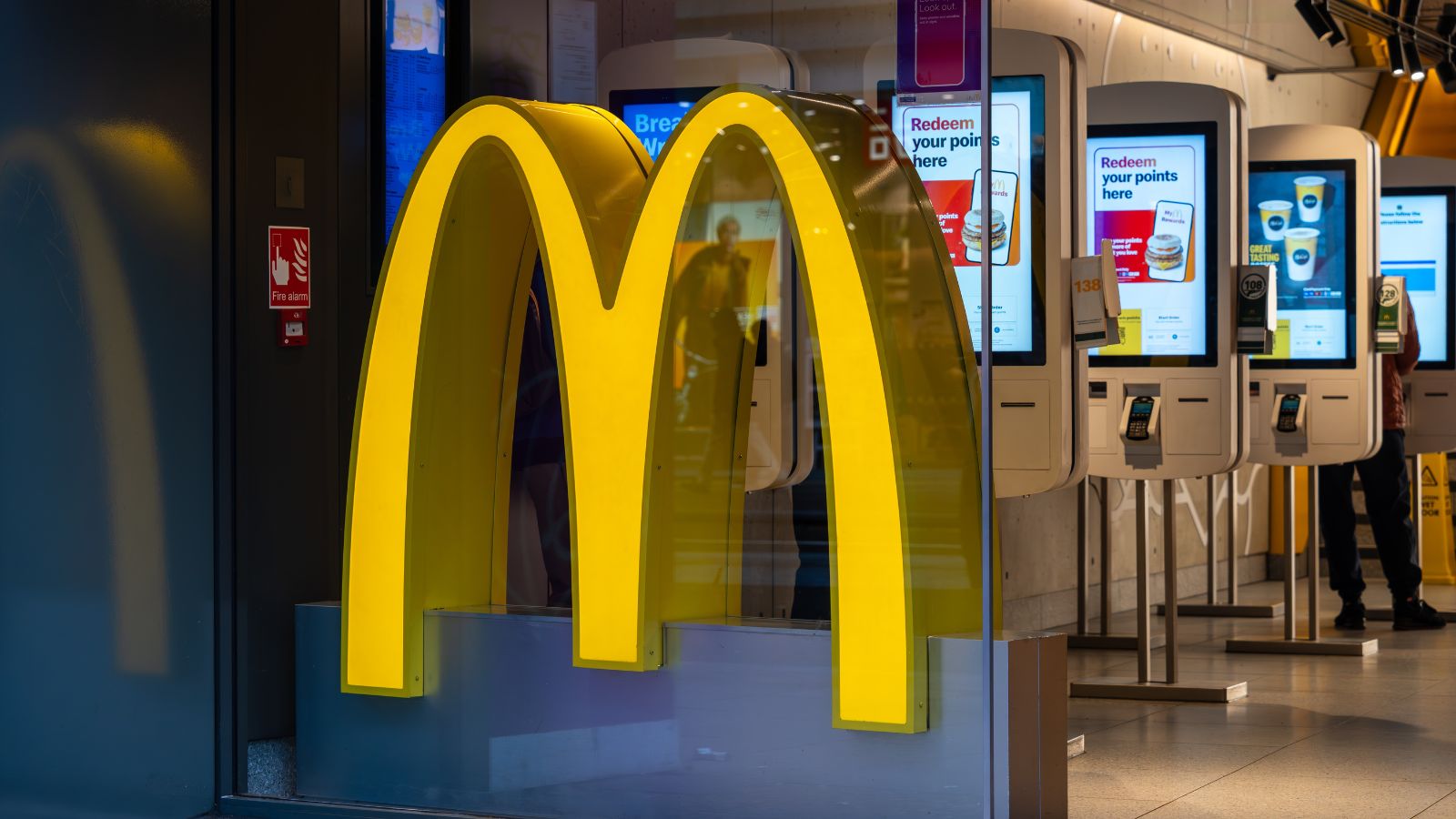
No one admits to loving McDonald’s, yet somehow every Canadian has a go-to order. Whether it’s the Filet-O-Fish during Lent or the seasonal McFlurry rush, McDonald’s remains an unstoppable force. The criticism? It’s too greasy, too loud, and too omnipresent. Canadians complain about disappearing menu items like the McPizza or the McRib, and prices that feel nothing like the dollar menu nostalgia from the ’90s. Yet when the craving hits, logic disappears faster than a box of nuggets. It’s that mix of comfort and guilt that keeps McDonald’s both scorned and secretly cherished.
Walmart

Walmart has mastered the art of drawing shoppers who love to hate it. Canadians call it chaotic, understocked, and occasionally soul-crushing, but they still show up for the $5 deals and bulk snacks. Critics argue it’s the reason local stores shut down and that its checkout lines feel endless. Still, few can resist a one-stop shop for groceries, socks, shampoo, and discounted furniture. It’s not glamorous, but when payday is far away, Walmart feels like salvation. The company knows this, and that’s exactly why its fluorescent aisles remain packed no matter how many people complain online.
Dunkin’ Donuts

Dunkin’ tried to conquer the Canadian coffee scene years ago but failed spectacularly. Its overly sweet donuts, watery coffee, and overly “American” branding never clicked with locals who already had Tim Hortons loyalty. Despite its exit, Canadians who travel to the U.S. still stop by out of curiosity, then return with reminders of why it flopped. Its return has been rumored multiple times, but most Canadians agree that the pink-orange empire should stay where it belongs. Dunkin’ remains the prime example of a brand that Canada rejected yet still manages to spark nostalgic chatter.
Olive Garden

Olive Garden markets itself as “family-style Italian,” but Canadians often question whether endless breadsticks count as authentic cuisine. Still, that unlimited soup-salad-breadstick combo keeps people coming back. Many grumble about microwaved pasta and overly salted sauces, but others quietly admit it’s a comfort spot for affordable group dinners. It’s not fine dining, but it hits a specific craving between payday takeout and fancy restaurants. The chain has even become a cultural joke, but the parking lots stay full, proof that Canadians might not trust its “authentic Italian” tagline, yet they trust it enough to keep eating there.
Chipotle

Chipotle entered Canada promising fresh, customizable Mexican food, something that sounded great until people saw the prices. Canadians quickly noticed they were paying nearly $18 for a burrito and guac that costs extra. While the food quality is praised, the portions and value often aren’t. Complaints about line congestion and inconsistent spice levels abound, but it remains a lunchtime favourite for downtown workers. There’s also mild resentment toward its “healthier fast food” branding, which feels ironic once you realize how calorie-dense those burritos are. Still, no one’s quitting that smoky chipotle mayo anytime soon.
Target

Target’s short-lived Canadian venture is still legendary, for all the wrong reasons. When it opened in 2013, excitement was sky-high. Then came the empty shelves, higher-than-expected prices, and lack of U.S. product selection. Within two years, every store shut down. Canadians mock the brand for its overconfidence but still admit to missing its aesthetic and product variety. Ironically, many still cross the border just to shop at Target, proving that the love-hate dynamic lives on. It’s remembered as the ultimate corporate heartbreak story, where anticipation turned into disappointment faster than any clearance sale.
Taco Bell

Taco Bell’s reputation in Canada is as messy as its tacos. Fans defend its late-night appeal, while critics dismiss it as low-quality fast food pretending to be Mexican cuisine. Many complain about bland meat or ingredients that feel processed beyond recognition. Yet somehow, those cheesy Gordita crunches keep selling. The brand thrives on nostalgia and affordability, even if most customers wouldn’t admit it in public. Whether it’s a guilty pleasure after a night out or a spontaneous craving, Taco Bell remains both mocked and loved in equal measure, proof that taste buds don’t always care about dignity.
Applebee’s

Applebee’s markets itself as the “neighborhood grill,” but many Canadians think of it as the place for average food at premium prices. Its menus are massive, its cocktails sugary, and its décor eternally stuck in 2005. Critics often say it lacks personality, yet it somehow continues to draw in families who want predictable, safe dining. It’s comfort food for the indecisive: a little bit of everything, nothing truly special. Still, its boneless wings and happy hour deals maintain loyal followers. Applebee’s may never win awards, but it wins enough stomachs to stay relevant.
Subway

Subway markets itself as the “healthier” fast-food option, but Canadians have long stopped buying that idea. Between limp lettuce, inconsistent portioning, and bread that barely resembles actual bread, Subway earns more eye rolls than praise. Yet, during a workday lunch rush, its convenience wins every time. People love to complain about soggy sandwiches, but that footlong remains a dependable go-to. There’s something almost ritualistic about pretending to choose “fresh” ingredients while watching your meal wrapped in paper. Subway isn’t anyone’s favourite, but it’s the fallback choice that nobody truly quits.
IHOP

IHOP was supposed to bring the joy of American breakfast excess to Canada. Instead, it brought confusion about why pancakes could cost $20. Canadians complain about sticky tables, uneven service, and too-sweet toppings, but they still show up for the giant portions and all-day breakfast. It’s both loved for its indulgence and ridiculed for its execution. The chain feels like an imported novelty, a place you visit twice a year for nostalgia or hangover recovery. Despite the criticism, few can resist fluffy pancakes with syrup that tastes suspiciously like corn syrup, not maple.
Popeyes

Popeyes earns both admiration and annoyance. Fans swear by the crispy chicken and spicy seasoning, but critics despise the long waits and inconsistent quality between locations. Canadians complain about greasy packaging, missing biscuits, and lack of healthier sides. Still, its Louisiana branding and viral sandwiches keep crowds lining up. When Popeyes first introduced its chicken sandwich, some locations sold out for days, a phenomenon Canadians mocked and participated in simultaneously. Its fast-food chaos people can’t help returning to, proving that even a love-hate relationship can be profitable when fried chickens involved.
Cheesecake Factory

The Cheesecake Factory is known for huge portions, over-the-top décor, and a menu that reads like a novel. Canadians find it overwhelming but oddly satisfying. The prices are high, but so are the calorie counts, making it both indulgent and guilt-inducing. It’s where birthdays, first dates, and post-shopping meals collide in one chaotic dining experience. People complain about long waits and sensory overload, yet the lure of that 30-flavour cheesecake menu keeps them returning. It’s gluttony disguised as celebration, and that’s exactly why it works so well, even among those who pretend to hate it.
KFC

KFC once dominated the fried chicken scene, but its reputation has grown greasy over time. Canadians complain that it’s too oily, inconsistent, and often underwhelming compared to newer rivals like Mary Brown’s. Yet nostalgia keeps it alive, especially around holidays, when buckets become family staples. Many admit they regret it every time but somehow return for the secret recipe seasoning. It’s not the healthiest choice, and certainly not the fanciest, but that unmistakable smell of fried chicken still triggers cravings. KFC survives on a blend of nostalgia, habit, and a little culinary guilt.
Chili’s

Chili’s markets itself as casual and fun, but critics say it feels dated and overpriced. Its Tex-Mex menu, heavy on cheese, salt, and fried everything, often divides diners. Yet Canadians keep showing up for fajitas that sizzle and margaritas served in fishbowl-sized glasses. There’s a certain comfort in knowing exactly what to expect, even if you’ll leave full of regret. It’s not gourmet dining, but it’s consistent and social, which counts for something. Chili’s may never win over food critics, but its unapologetic comfort food keeps it on the love-to-hate list.
Five Guys

Five Guys came in promising high-quality burgers, and Canadians initially swooned, until they saw the price. Paying nearly $25 for a burger, fries, and drink makes many grumble, even if the food tastes better than most fast-food joints. The lack of drive-thrus and long waits add to the frustration. Yet those fries, cooked in peanut oil, remain addictive. It’s a chain that delivers great flavor wrapped in customer irritation. Canadians love to complain about how expensive it is, but few can resist when the craving for a “real burger” hits.
Cracker Barrel

Cracker Barrel’s Americana vibe feels oddly out of place in Canada. Its country-store aesthetic, rocking chairs, and heavy breakfasts charm some but confuse others. Critics mock its overly nostalgic branding and calorie-dense menu, while fans appreciate the old-fashioned comfort food. It’s both a cultural curiosity and a guilty pleasure, offering fried everything with a side of nostalgia that doesn’t quite translate north of the border. Canadians visit once, joke about it later, and occasionally return when they want to feel like they’ve crossed into small-town Tennessee without leaving Ontario.
Red Lobster

Red Lobster has long walked the line between special occasion dining and fast-casual seafood. Canadians complain about the frozen taste, high prices, and inconsistent service, yet the cheddar bay biscuits keep them hooked. It’s the kind of place people mock publicly but secretly crave. Birthdays, promotions, and Friday nights still find full booths of diners convincing themselves it’s fancy. The seafood may not be ocean-fresh, but the experience feels nostalgic and safe. Red Lobster remains the go-to spot for people who want to “treat themselves” without truly splurging.
Krispy Kreme

When Krispy Kreme first opened in Canada, people lined up around the block. Within a few years, the hype fizzled. Critics complained that the donuts were too sweet, too soft, and overpriced compared to local bakeries. Still, whenever a “Hot Now” sign lights up, the crowds magically reappear. It’s a sugary contradiction, too indulgent for regular consumption, yet too iconic to abandon. Canadians mock its sugar rush while simultaneously buying half a dozen “for later.” Krispy Kreme’s appeal lies in nostalgia and novelty, not practicality, which is why it never fully disappears from conversation.
Buffalo Wild Wings

Buffalo Wild Wings has its loyal sports-bar crowd, but even they admit it’s a mixed experience. Prices fluctuate, wings can be inconsistent, and the noise level often resembles a stadium. Critics say it’s all hype with mediocre food, yet the combination of sports screens, beer, and group energy keeps people coming. It’s not about the cuisine, it’s about the vibe. Canadians may mock the American bravado, oversized portions, and over-sauced wings, but they still gather there for game nights and celebrations. Buffalo Wild Wings thrives on exactly what people claim to dislike.
21 Products Canadians Should Stockpile Before Tariffs Hit

If trade tensions escalate between Canada and the U.S., everyday essentials can suddenly disappear or skyrocket in price. Products like pantry basics and tech must-haves that depend on are deeply tied to cross-border supply chains and are likely to face various kinds of disruptions
21 Products Canadians Should Stockpile Before Tariffs Hit
Starbucks
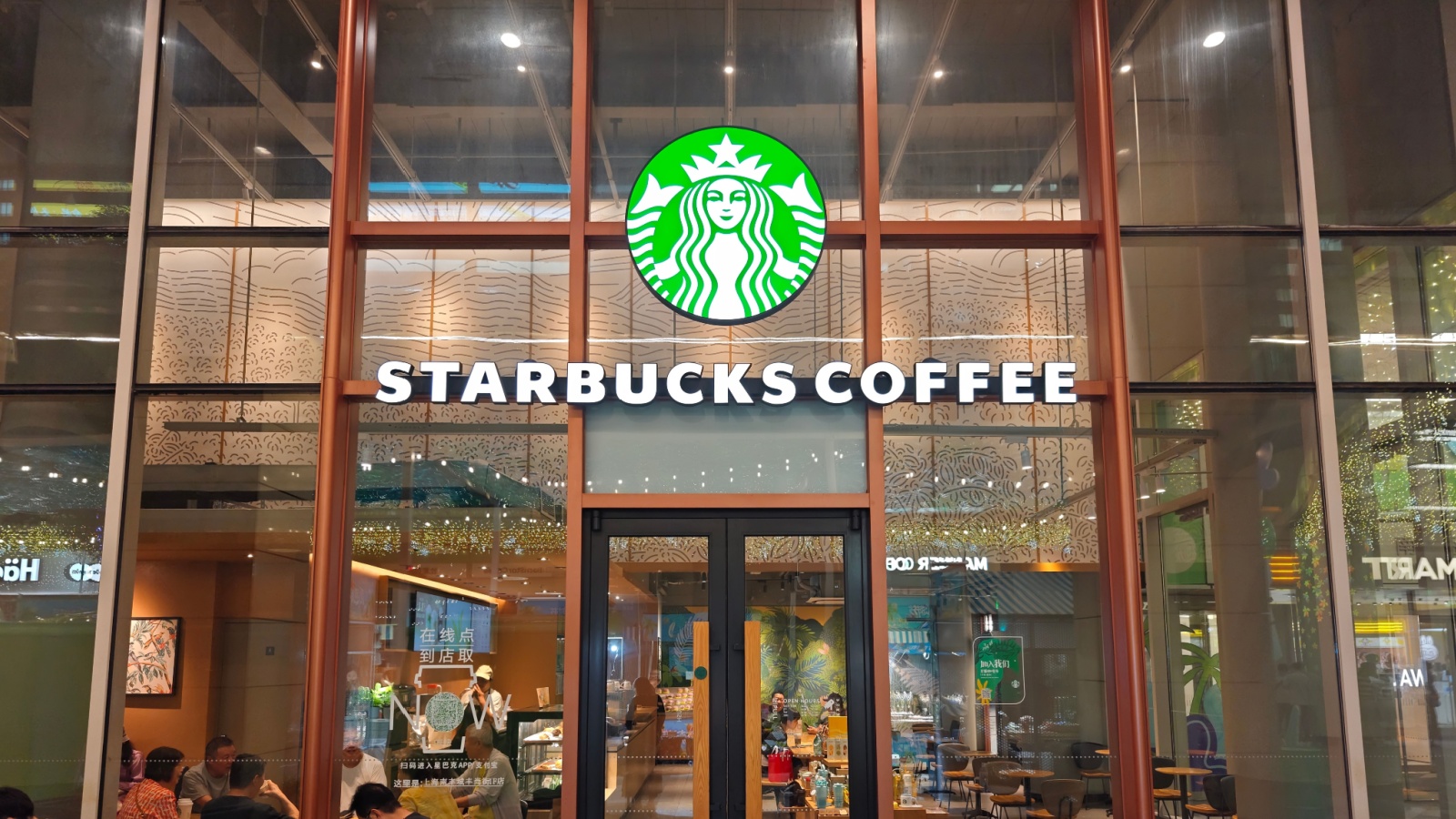
Starbucks might be a staple for millions, but in Canada, it’s the poster child for overpriced coffee culture. Canadians can’t resist a caramel macchiato, yet many still roll their eyes at paying $7 for something Tim Hortons sells for half the price. Complaints about tiny pastries, burned espresso, and inconsistent quality are common, but that doesn’t stop long lines from forming every morning. Even its décor, half-minimalist, half-pretentious, invites ridicule. Still, it’s where students camp for Wi-Fi, freelancers chase productivity, and everyone pretends to know what “grande” means. Canadians may sigh, but their loyalty (and latte orders) remain intact.
McDonald’s

No one admits to loving McDonald’s, yet somehow every Canadian has a go-to order. Whether it’s the Filet-O-Fish during Lent or the seasonal McFlurry rush, McDonald’s remains an unstoppable force. The criticism? It’s too greasy, too loud, and too omnipresent. Canadians complain about disappearing menu items like the McPizza or the McRib, and prices that feel nothing like the dollar menu nostalgia from the ’90s. Yet when the craving hits, logic disappears faster than a box of nuggets. It’s that mix of comfort and guilt that keeps McDonald’s both scorned and secretly cherished.
Walmart

Walmart has mastered the art of drawing shoppers who love to hate it. Canadians call it chaotic, understocked, and occasionally soul-crushing, but they still show up for the $5 deals and bulk snacks. Critics argue it’s the reason local stores shut down and that its checkout lines feel endless. Still, few can resist a one-stop shop for groceries, socks, shampoo, and discounted furniture. It’s not glamorous, but when payday is far away, Walmart feels like salvation. The company knows this, and that’s exactly why its fluorescent aisles remain packed no matter how many people complain online.
Dunkin’ Donuts

Dunkin’ tried to conquer the Canadian coffee scene years ago but failed spectacularly. Its overly sweet donuts, watery coffee, and overly “American” branding never clicked with locals who already had Tim Hortons loyalty. Despite its exit, Canadians who travel to the U.S. still stop by out of curiosity, then return with reminders of why it flopped. Its return has been rumored multiple times, but most Canadians agree that the pink-orange empire should stay where it belongs. Dunkin’ remains the prime example of a brand that Canada rejected yet still manages to spark nostalgic chatter.
Olive Garden

Olive Garden markets itself as “family-style Italian,” but Canadians often question whether endless breadsticks count as authentic cuisine. Still, that unlimited soup-salad-breadstick combo keeps people coming back. Many grumble about microwaved pasta and overly salted sauces, but others quietly admit it’s a comfort spot for affordable group dinners. It’s not fine dining, but it hits a specific craving between payday takeout and fancy restaurants. The chain has even become a cultural joke, but the parking lots stay full, proof that Canadians might not trust its “authentic Italian” tagline, yet they trust it enough to keep eating there.
Chipotle

Chipotle entered Canada promising fresh, customizable Mexican food, something that sounded great until people saw the prices. Canadians quickly noticed they were paying nearly $18 for a burrito and guac that costs extra. While the food quality is praised, the portions and value often aren’t. Complaints about line congestion and inconsistent spice levels abound, but it remains a lunchtime favourite for downtown workers. There’s also mild resentment toward its “healthier fast food” branding, which feels ironic once you realize how calorie-dense those burritos are. Still, no one’s quitting that smoky chipotle mayo anytime soon.
Target

Target’s short-lived Canadian venture is still legendary, for all the wrong reasons. When it opened in 2013, excitement was sky-high. Then came the empty shelves, higher-than-expected prices, and lack of U.S. product selection. Within two years, every store shut down. Canadians mock the brand for its overconfidence but still admit to missing its aesthetic and product variety. Ironically, many still cross the border just to shop at Target, proving that the love-hate dynamic lives on. It’s remembered as the ultimate corporate heartbreak story, where anticipation turned into disappointment faster than any clearance sale.
Taco Bell

Taco Bell’s reputation in Canada is as messy as its tacos. Fans defend its late-night appeal, while critics dismiss it as low-quality fast food pretending to be Mexican cuisine. Many complain about bland meat or ingredients that feel processed beyond recognition. Yet somehow, those cheesy Gordita crunches keep selling. The brand thrives on nostalgia and affordability, even if most customers wouldn’t admit it in public. Whether it’s a guilty pleasure after a night out or a spontaneous craving, Taco Bell remains both mocked and loved in equal measure, proof that taste buds don’t always care about dignity.
Applebee’s

Applebee’s markets itself as the “neighborhood grill,” but many Canadians think of it as the place for average food at premium prices. Its menus are massive, its cocktails sugary, and its décor eternally stuck in 2005. Critics often say it lacks personality, yet it somehow continues to draw in families who want predictable, safe dining. It’s comfort food for the indecisive: a little bit of everything, nothing truly special. Still, its boneless wings and happy hour deals maintain loyal followers. Applebee’s may never win awards, but it wins enough stomachs to stay relevant.
Subway

Subway markets itself as the “healthier” fast-food option, but Canadians have long stopped buying that idea. Between limp lettuce, inconsistent portioning, and bread that barely resembles actual bread, Subway earns more eye rolls than praise. Yet, during a workday lunch rush, its convenience wins every time. People love to complain about soggy sandwiches, but that footlong remains a dependable go-to. There’s something almost ritualistic about pretending to choose “fresh” ingredients while watching your meal wrapped in paper. Subway isn’t anyone’s favourite, but it’s the fallback choice that nobody truly quits.
IHOP

IHOP was supposed to bring the joy of American breakfast excess to Canada. Instead, it brought confusion about why pancakes could cost $20. Canadians complain about sticky tables, uneven service, and too-sweet toppings, but they still show up for the giant portions and all-day breakfast. It’s both loved for its indulgence and ridiculed for its execution. The chain feels like an imported novelty, a place you visit twice a year for nostalgia or hangover recovery. Despite the criticism, few can resist fluffy pancakes with syrup that tastes suspiciously like corn syrup, not maple.
Popeyes

Popeyes earns both admiration and annoyance. Fans swear by the crispy chicken and spicy seasoning, but critics despise the long waits and inconsistent quality between locations. Canadians complain about greasy packaging, missing biscuits, and lack of healthier sides. Still, its Louisiana branding and viral sandwiches keep crowds lining up. When Popeyes first introduced its chicken sandwich, some locations sold out for days, a phenomenon Canadians mocked and participated in simultaneously. Its fast-food chaos people can’t help returning to, proving that even a love-hate relationship can be profitable when fried chickens involved.
Cheesecake Factory

The Cheesecake Factory is known for huge portions, over-the-top décor, and a menu that reads like a novel. Canadians find it overwhelming but oddly satisfying. The prices are high, but so are the calorie counts, making it both indulgent and guilt-inducing. It’s where birthdays, first dates, and post-shopping meals collide in one chaotic dining experience. People complain about long waits and sensory overload, yet the lure of that 30-flavour cheesecake menu keeps them returning. It’s gluttony disguised as celebration, and that’s exactly why it works so well, even among those who pretend to hate it.
KFC

KFC once dominated the fried chicken scene, but its reputation has grown greasy over time. Canadians complain that it’s too oily, inconsistent, and often underwhelming compared to newer rivals like Mary Brown’s. Yet nostalgia keeps it alive, especially around holidays, when buckets become family staples. Many admit they regret it every time but somehow return for the secret recipe seasoning. It’s not the healthiest choice, and certainly not the fanciest, but that unmistakable smell of fried chicken still triggers cravings. KFC survives on a blend of nostalgia, habit, and a little culinary guilt.
Chili’s

Chili’s markets itself as casual and fun, but critics say it feels dated and overpriced. Its Tex-Mex menu, heavy on cheese, salt, and fried everything, often divides diners. Yet Canadians keep showing up for fajitas that sizzle and margaritas served in fishbowl-sized glasses. There’s a certain comfort in knowing exactly what to expect, even if you’ll leave full of regret. It’s not gourmet dining, but it’s consistent and social, which counts for something. Chili’s may never win over food critics, but its unapologetic comfort food keeps it on the love-to-hate list.
Five Guys

Five Guys came in promising high-quality burgers, and Canadians initially swooned, until they saw the price. Paying nearly $25 for a burger, fries, and drink makes many grumble, even if the food tastes better than most fast-food joints. The lack of drive-thrus and long waits add to the frustration. Yet those fries, cooked in peanut oil, remain addictive. It’s a chain that delivers great flavor wrapped in customer irritation. Canadians love to complain about how expensive it is, but few can resist when the craving for a “real burger” hits.
Cracker Barrel

Cracker Barrel’s Americana vibe feels oddly out of place in Canada. Its country-store aesthetic, rocking chairs, and heavy breakfasts charm some but confuse others. Critics mock its overly nostalgic branding and calorie-dense menu, while fans appreciate the old-fashioned comfort food. It’s both a cultural curiosity and a guilty pleasure, offering fried everything with a side of nostalgia that doesn’t quite translate north of the border. Canadians visit once, joke about it later, and occasionally return when they want to feel like they’ve crossed into small-town Tennessee without leaving Ontario.
Red Lobster

Red Lobster has long walked the line between special occasion dining and fast-casual seafood. Canadians complain about the frozen taste, high prices, and inconsistent service, yet the cheddar bay biscuits keep them hooked. It’s the kind of place people mock publicly but secretly crave. Birthdays, promotions, and Friday nights still find full booths of diners convincing themselves it’s fancy. The seafood may not be ocean-fresh, but the experience feels nostalgic and safe. Red Lobster remains the go-to spot for people who want to “treat themselves” without truly splurging.
Krispy Kreme

When Krispy Kreme first opened in Canada, people lined up around the block. Within a few years, the hype fizzled. Critics complained that the donuts were too sweet, too soft, and overpriced compared to local bakeries. Still, whenever a “Hot Now” sign lights up, the crowds magically reappear. It’s a sugary contradiction, too indulgent for regular consumption, yet too iconic to abandon. Canadians mock its sugar rush while simultaneously buying half a dozen “for later.” Krispy Kreme’s appeal lies in nostalgia and novelty, not practicality, which is why it never fully disappears from conversation.
Buffalo Wild Wings

Buffalo Wild Wings has its loyal sports-bar crowd, but even they admit it’s a mixed experience. Prices fluctuate, wings can be inconsistent, and the noise level often resembles a stadium. Critics say it’s all hype with mediocre food, yet the combination of sports screens, beer, and group energy keeps people coming. It’s not about the cuisine, it’s about the vibe. Canadians may mock the American bravado, oversized portions, and over-sauced wings, but they still gather there for game nights and celebrations. Buffalo Wild Wings thrives on exactly what people claim to dislike.
21 Products Canadians Should Stockpile Before Tariffs Hit

If trade tensions escalate between Canada and the U.S., everyday essentials can suddenly disappear or skyrocket in price. Products like pantry basics and tech must-haves that depend on are deeply tied to cross-border supply chains and are likely to face various kinds of disruptions
21 Products Canadians Should Stockpile Before Tariffs Hit
